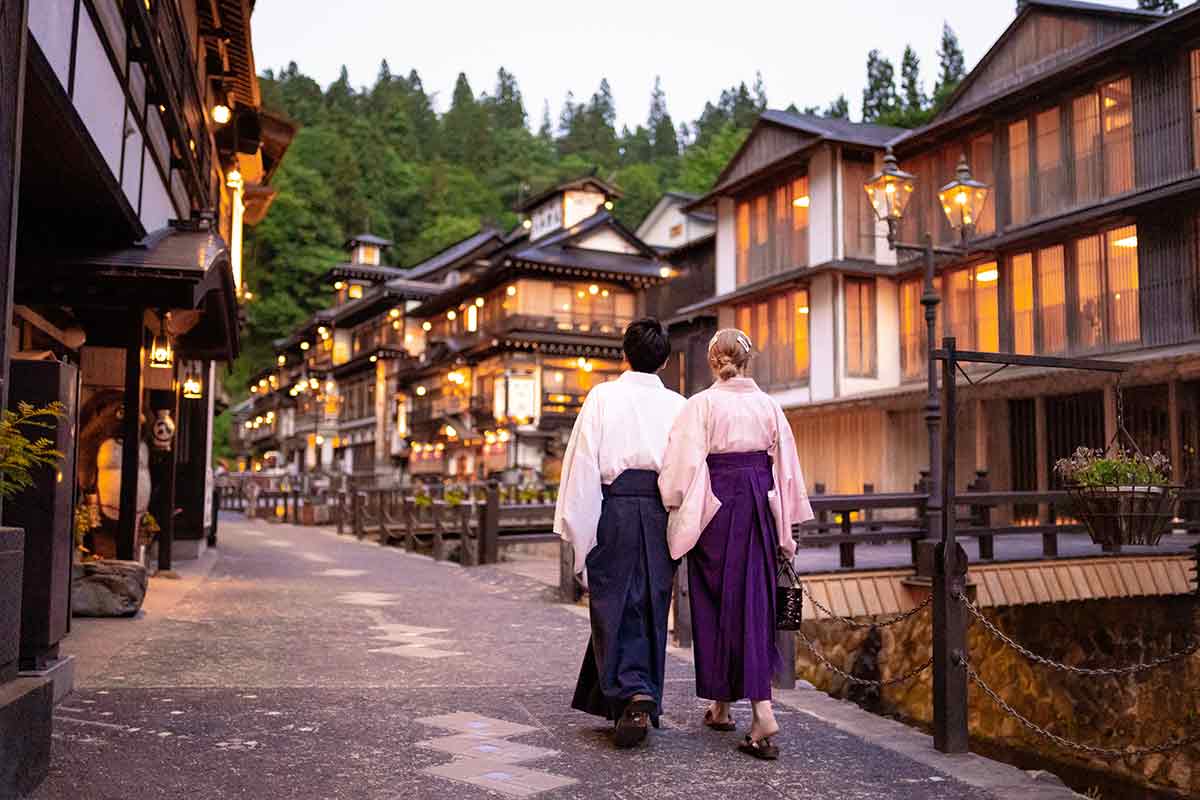The Tohoku region, tucked between the geographically largest region of Japan, Hokkaido, and the country’s most populated region, Kanto, carries a sense of enigma for most visitors to Japan. Often praised for its mystical natural beauty, the region, which entails six prefectures, is also home to numerous cultural experiences.
Tohoku gives its visitors the rare opportunity to not only observe but also to step into the everyday life of its habitants, interact with them, and have first-hand experience of its culture. In a world where most destinations are shaped by the demands of tourism, this picturesque part of Japan offers the chance for the genuine experience we all crave while also ensuring that the visitors do not have to sacrifice the level of comfort that Japan is known for.
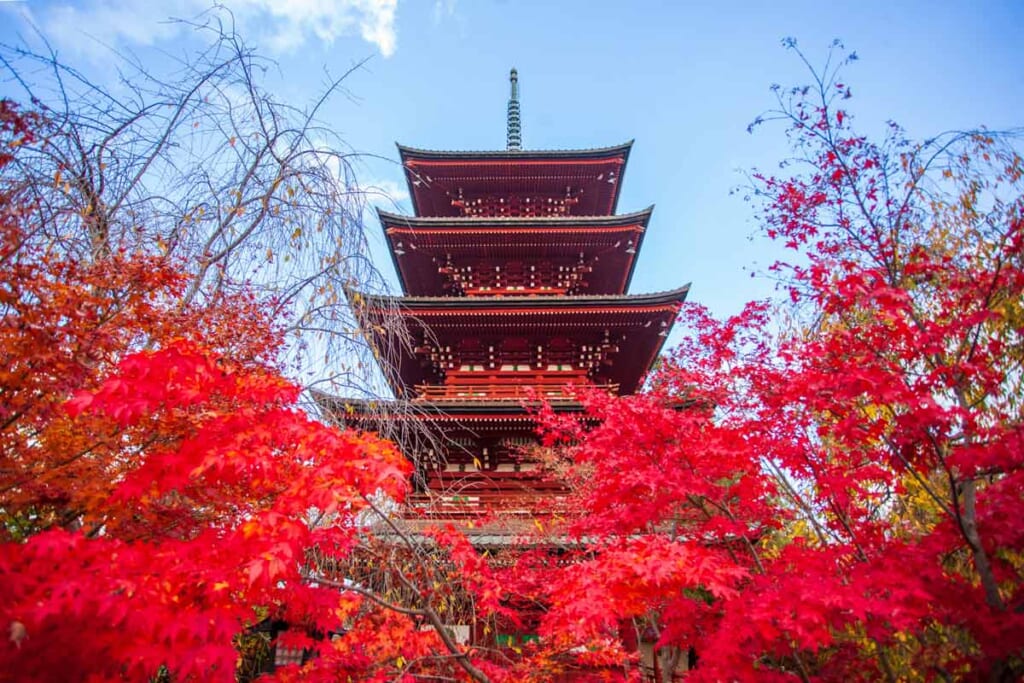
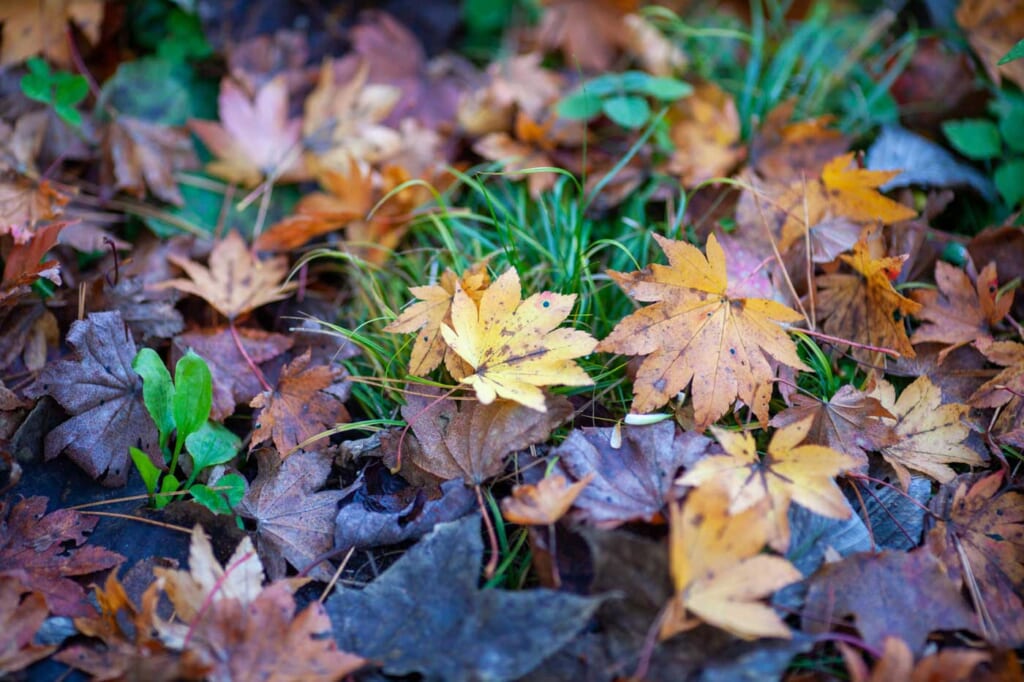
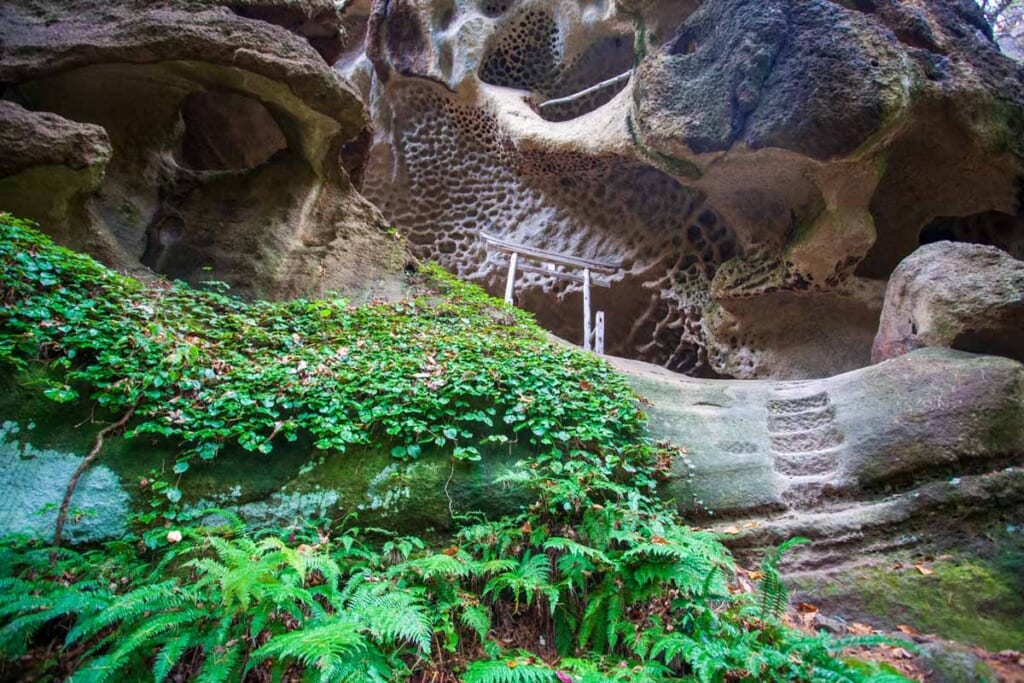
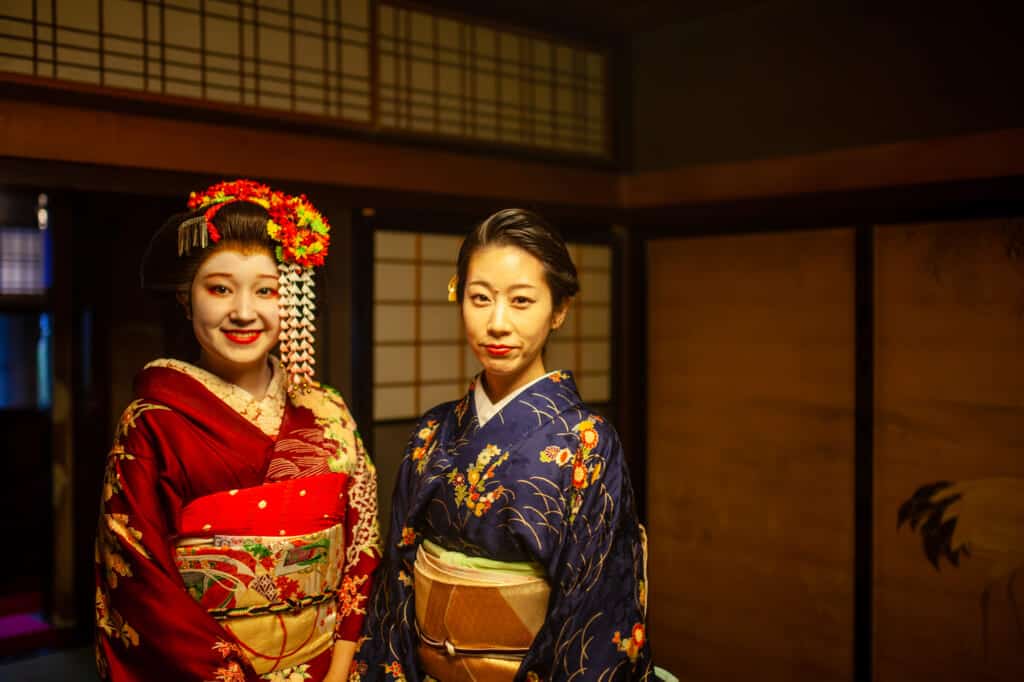
This is a summary of the highlights of my one-week autumn trip in the region covering five of its prefectures; Aomori, Akita, Yamagata, Miyagi, and Fukushima, each offering a perfect blend of nature sites, exquisite accommodation representing some of the finest examples of Japanese hospitality in addition to countless culinary and cultural experiences.
- Aomori: Cultural Experiences Surrounding the Blue Forests
- Akita: Land of Rice, Breweries, and Hidden Onsen
- Yamagata: Land of Singing Boatmen, Hidden Temples, and Historical Onsen
- Miyagi: Taste the World Famous Japanese Whisky and Stay in a 600-Year-Old Onsen Town
- Fukushima: Colorful Experiences, Welcoming Locals
- How to Access Tohoku
Aomori: Cultural Experiences Surrounding the Blue Forests
Aomori prefecture, located in the northernmost part of the Tohoku region, is a perfect place to start any trip to Tohoku. Directly connected to Tokyo via the Shinkansen line (approximately 3.5 hours), Aomori is a place of colorful nature, lively small towns, and some of the finest accommodations in Japan.
These are some of the experiences in Aomori that allowed me to build a better understanding of the culture of the prefecture that perfectly complements its already famous nature.
Colorful Lantern Workshop at IRODORI
Aomori is best known for its Nebuta Festival, which occurs every year in August. Thanks to colorful paper floats, Nebuta is rightfully recognized as one of the most vivid summer festivals in Japan, if not also one of the most famous. In Aomori Prefecture, there are a variety of Nebuta, including the 5-meter tall Ningyo Nebuta in Aomori City, the 23-meter tall Tachineputa in Goshogawara, and the 4.5-meter tall fan-shaped Nebuta in Kuroishi.
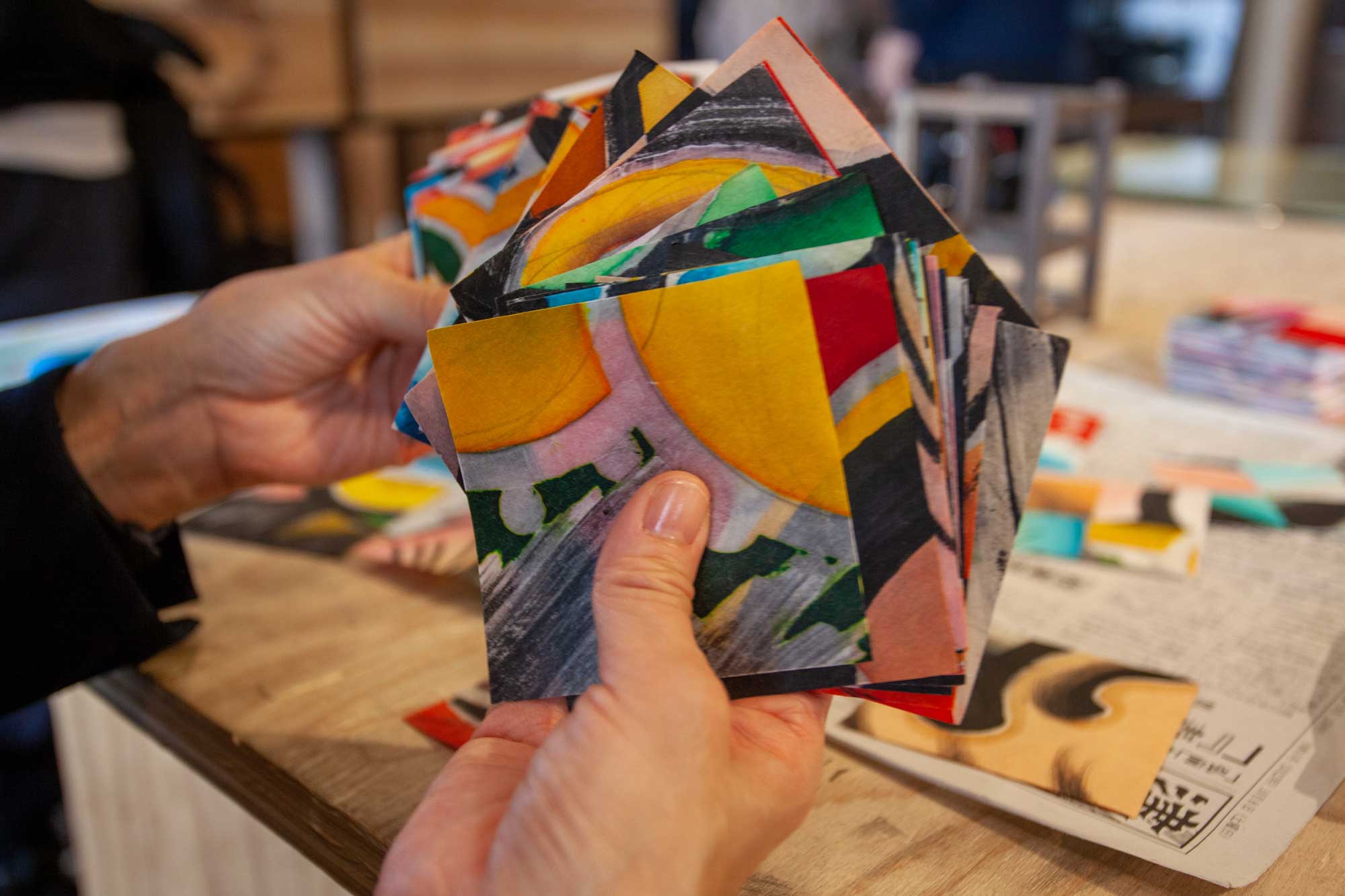
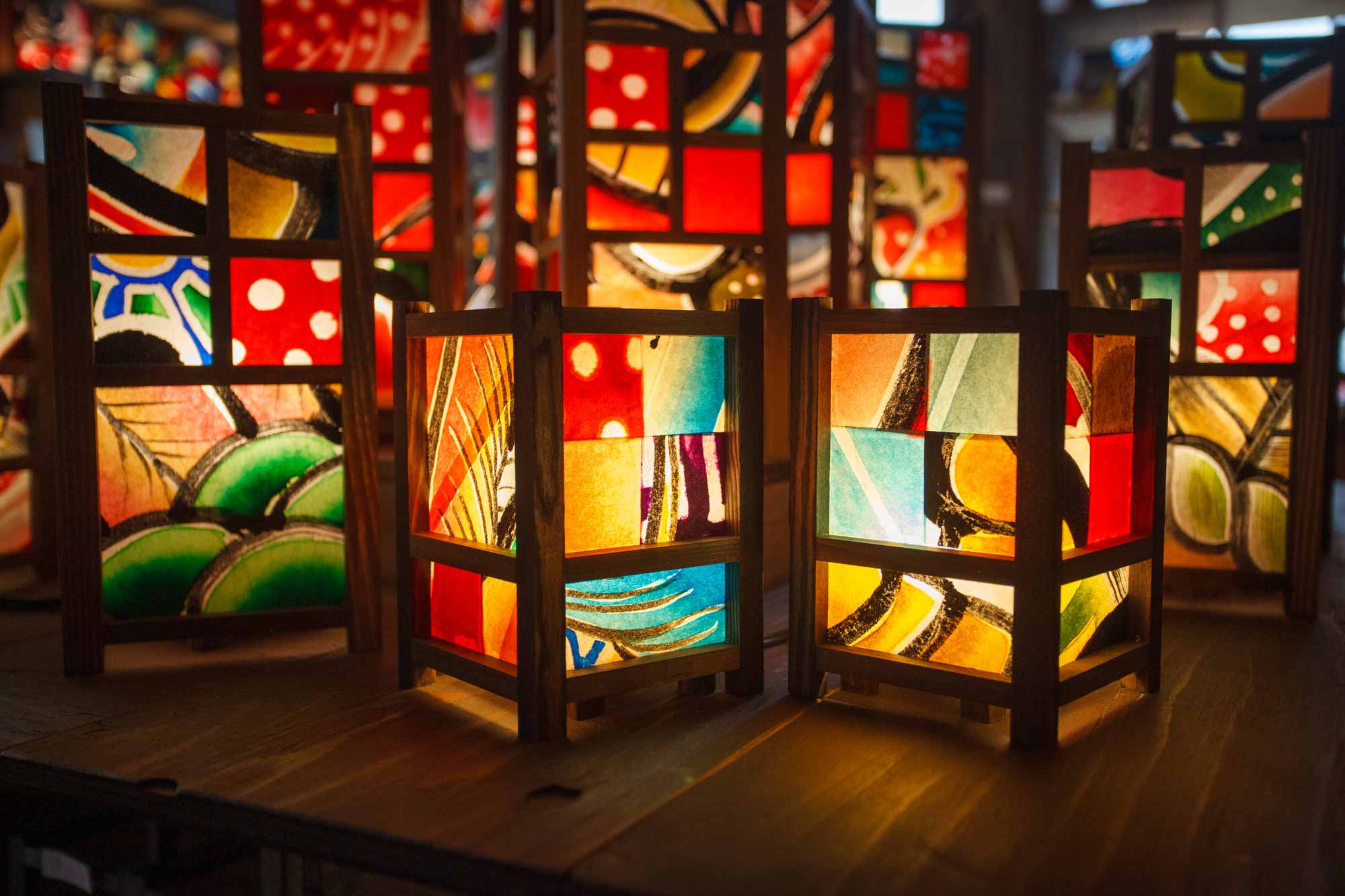
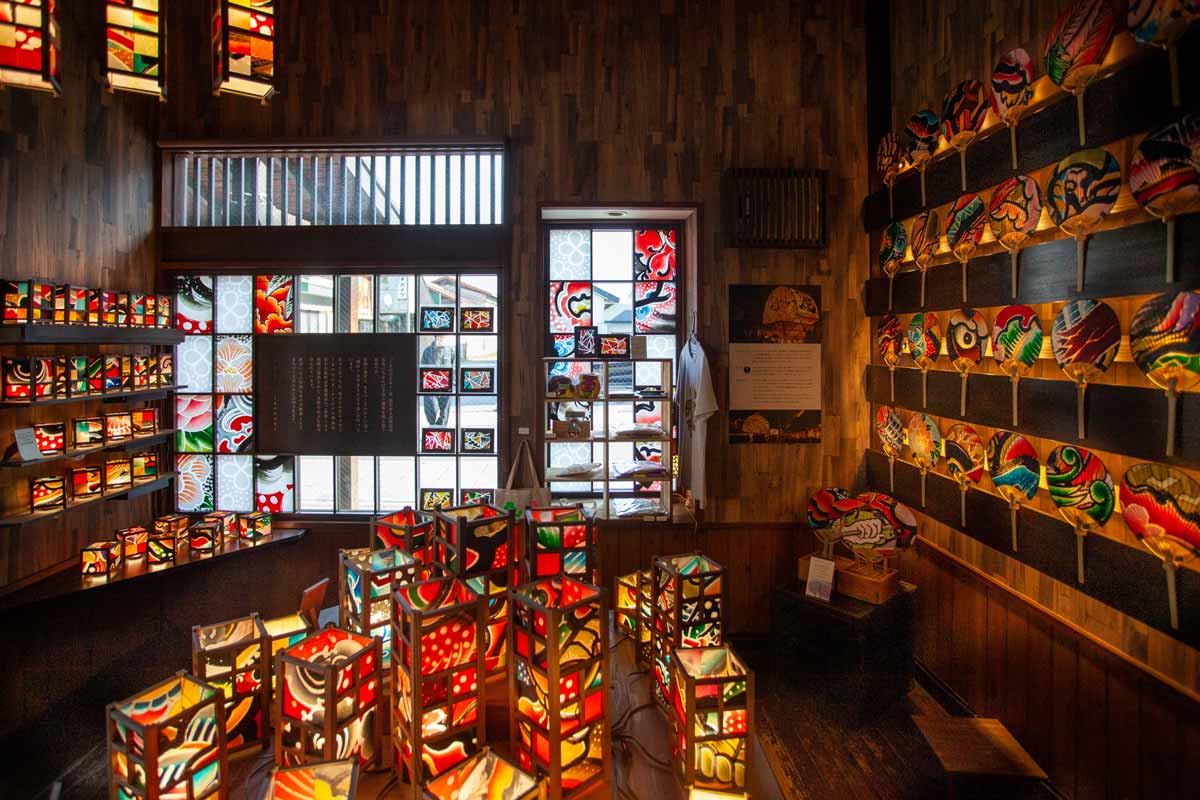
While the festival occurs once a year, the spirit of the festival, which initially started as a way to liven up the region’s farmers during the humid summer months, can be sensed throughout the year. Honoring that spirit, we also started the trip with an experience related to the Nebuta Festival. IRODORI Shop, located in the well-preserved Kuroishi city (黒石市) within 45 minutes of Aomori city by car, offers visitors the chance to literally get their hands on the colorful behind-the-scenes aspects of the festival.
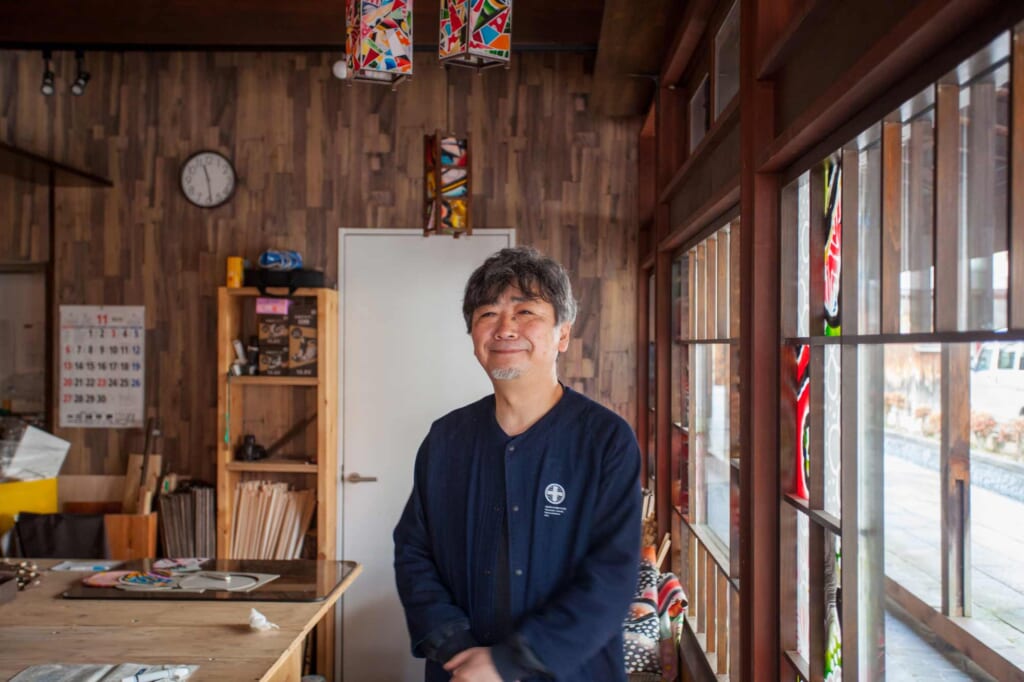
To promote sustainable practices, the owners of IRODORI shop formulated the idea of using the paper left over from the float-making process to launch a workshop where the visitors can make their own lanterns. The process, which involves gluing various pieces of paper to the wooden frame under the guidance of the shop owner, is a relatively simple, relaxing experience that offers the chance to learn more about this intriguing festival from the townspeople.
Hirosaki City: Fine Dining, Modern Art, and Juicy Apples
After a colorful morning in Kuroishi, our next stop was the lively Hirosaki city (弘前市). While Tohoku is known as one of the best places to experience traditional Japanese culture, the region is also home to an impressive number of architectural and cultural traits reminiscent of western culture.

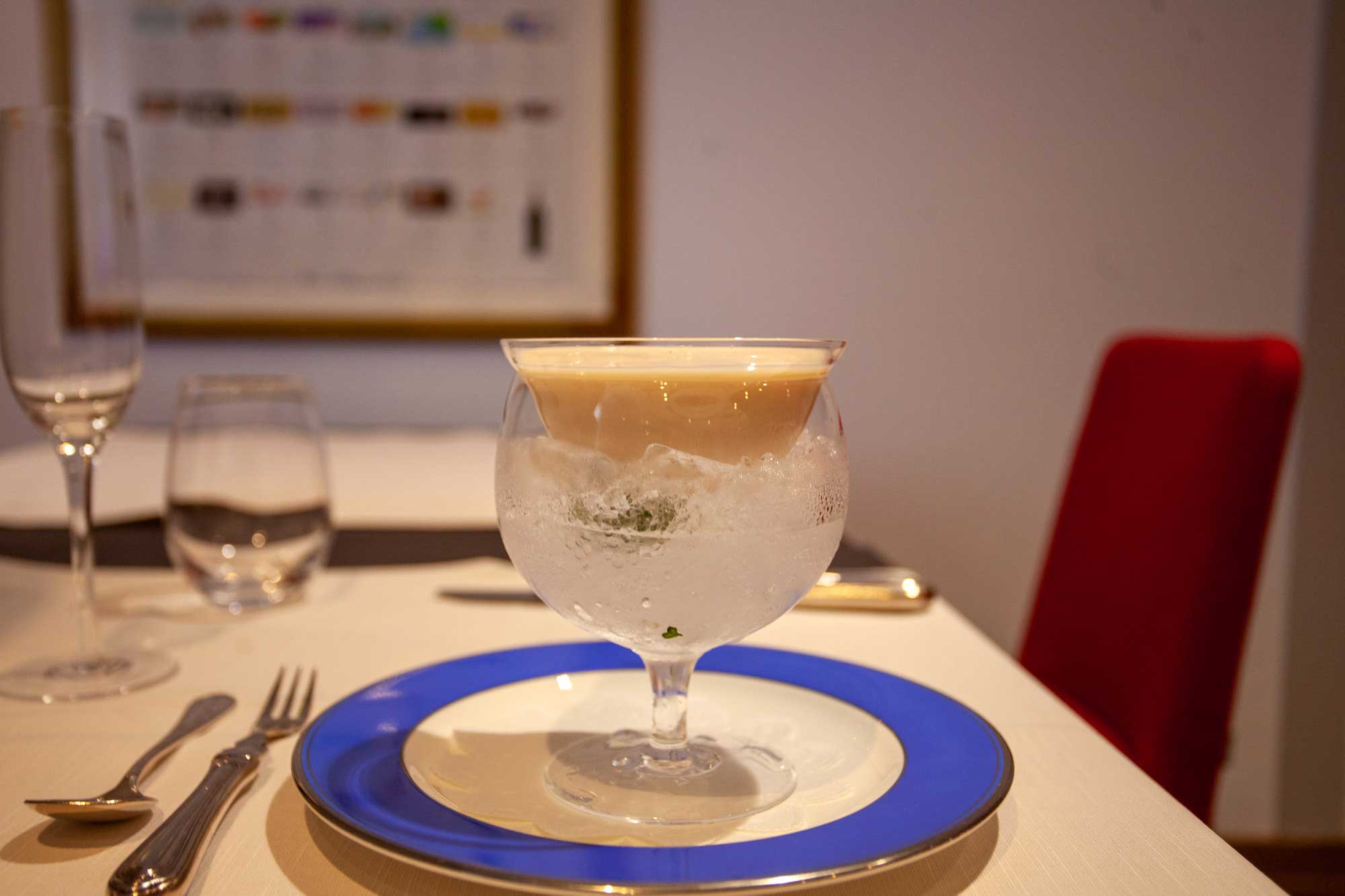
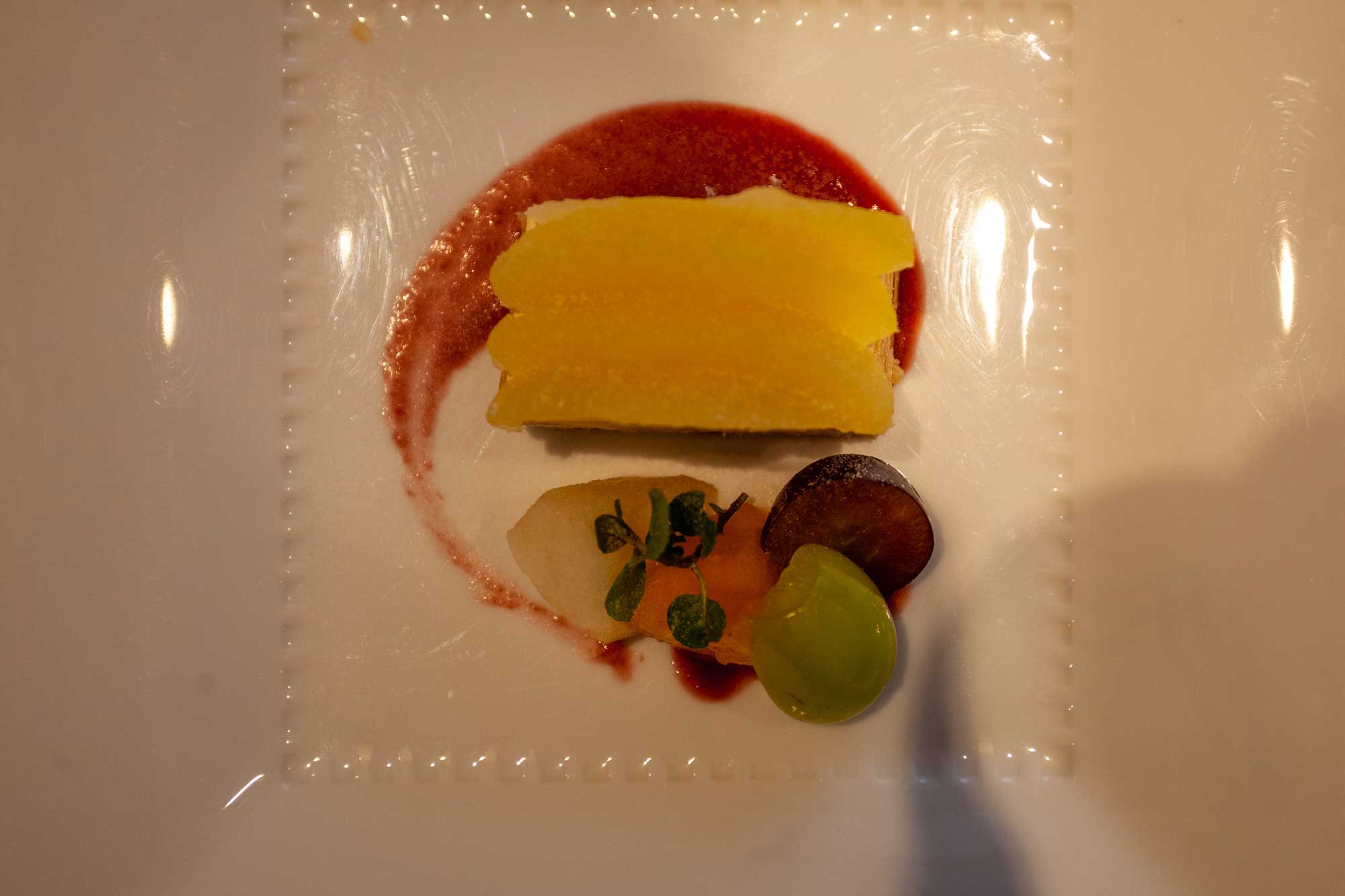
During the Meiji Restoration period in 1868, Hirosaki was among the towns that invited many westerners for cultural exchange to speed up Japan’s integration into the rest of the world after a period of relative seclusion. This period of exchange eventually led to the opening of many restaurants serving French cuisine. Yamazaki is one of those restaurants where you are guaranteed to have not only a tasty but also a refined dining experience. Already a fan of French cuisine, I really appreciated the creative approach brought by the Japanese cook using ingredients unique to Aomori to deliver surprising yet pleasant flavors fitting into French cuisine.
The signature dish is the cold apple soup made using the apple that Aomori is famous for. The delicate dish with surprising after-tastes will please even those not very fond of sweets, like myself. Yamazaki Restaurant offers many set menus that include grilled stuffed chicken, scallops, salmon, and wagyu beef, among others.

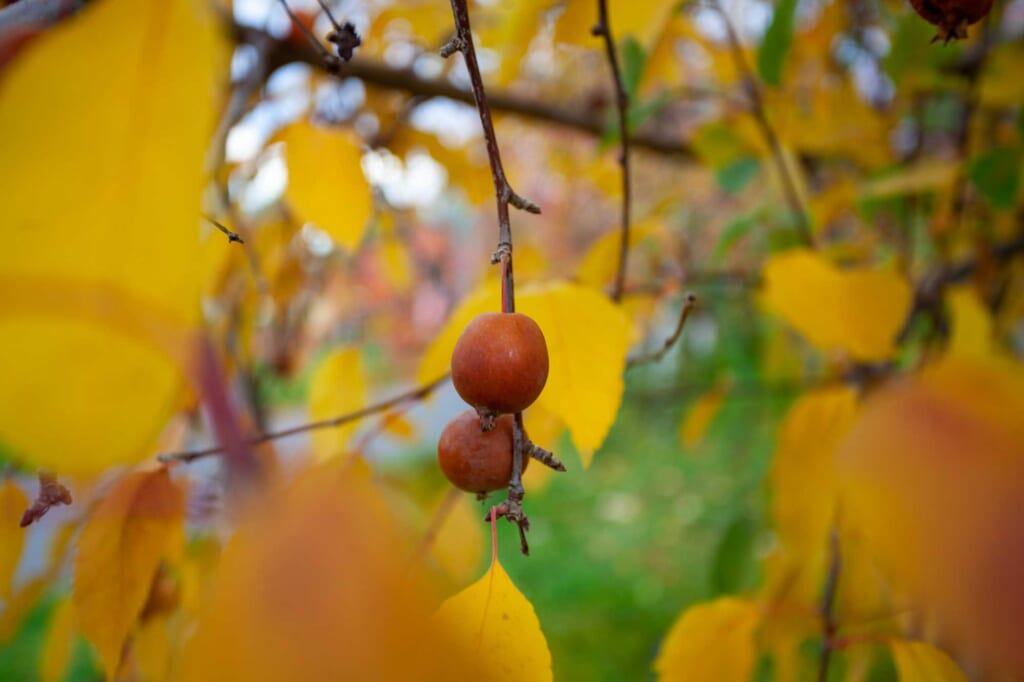
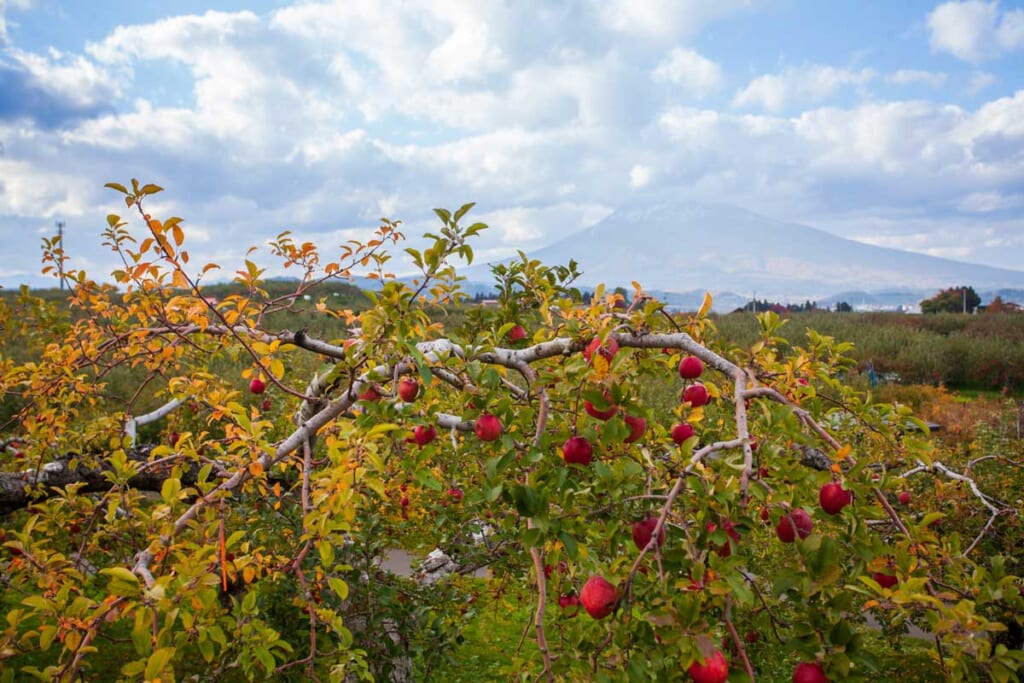
To learn more about the apple behind Yamazaki’s cold apple soup, our next stop was Hirosaki Apple Park, where eighty varieties of Fuji apple unique to Aomori prefecture, responsible for half of the entire production in Japan, are cultivated. The park gives the visitors a chance to shop for a variety of apple products and also hand-pick their own large and juicy apples in a beautiful environment surrounded by the mountains of Aomori.
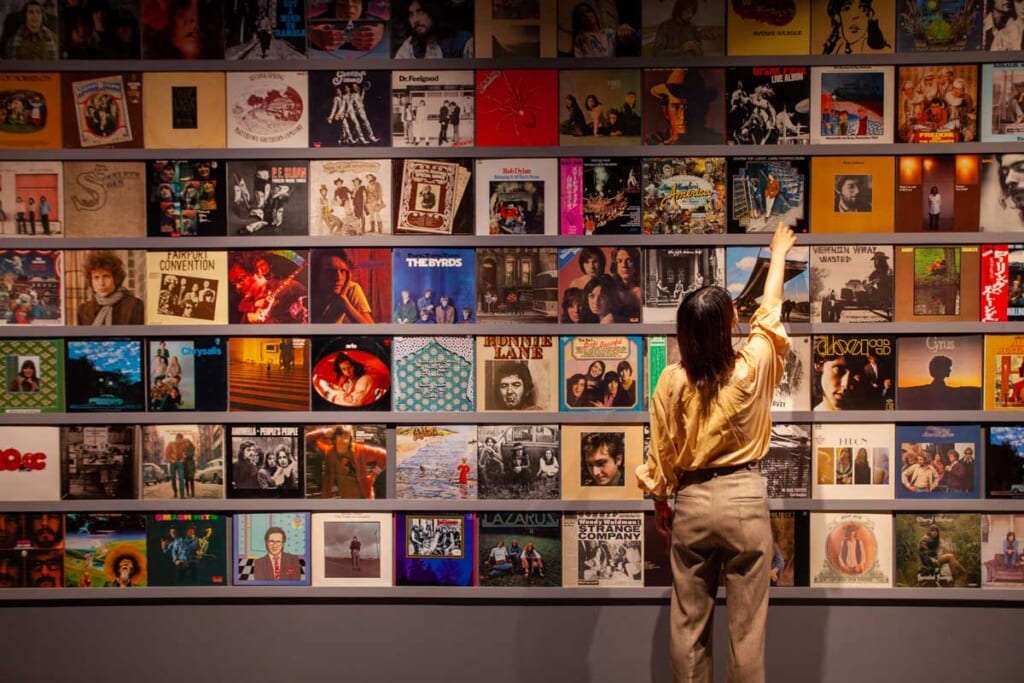
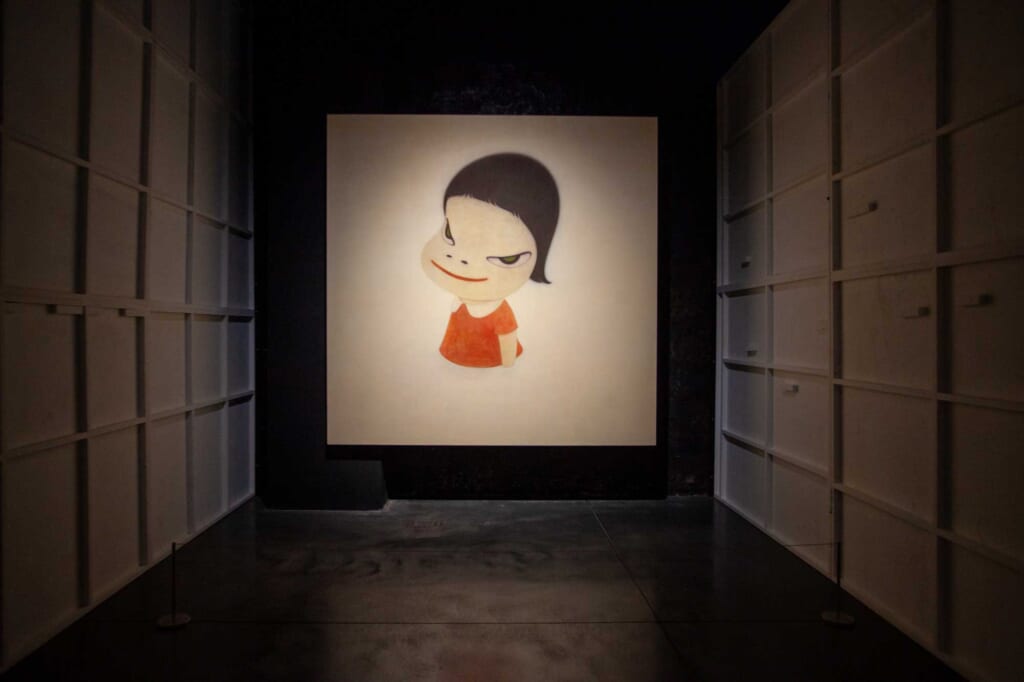
Our last stop in Hirosaki was the Museum of Contemporary Art, occupying an old, stylish brick building that used to be a brewery. The museum aims to launch two temporary exhibitions per year to promote connectivity to the Tohoku region and share its history with the museum’s visitors. It also reflects an excellent use of an old European-style building that was abandoned for years. The adjacent museum shop and cafe now also serve as a gathering place for towns locals who often make the best of the afternoon happy hour enjoying apple cider.
Also Read: Explore Hirosaki’s Samurai Heritage, Home to One of Japan’s Original Castles
BUNACO: Award-winning Wooden Crafts
Aomori’s natural wonders are not merely limited to edible products but also result in some award-winning wooden crafts. BUNACO factory, located in Nishimeya village (西目屋村), occupies a building that once served as a school. Here, visitors can get closer to the manual and almost meditative process behind their stylish products that include, among others, speakers (seductively displayed in the former music room of the school), lamps, and tableware.
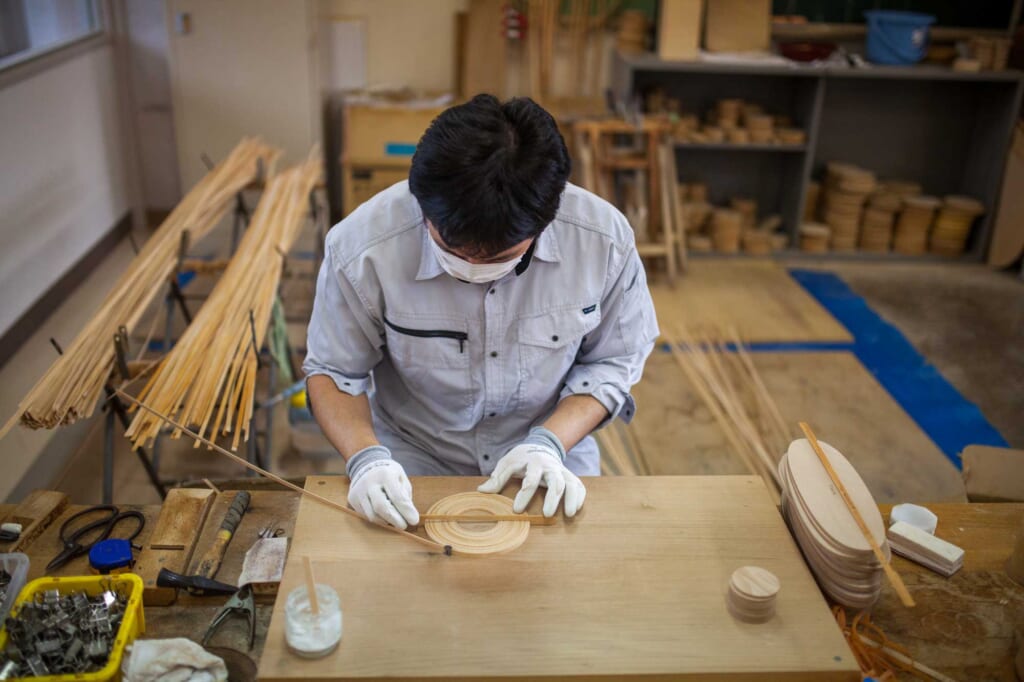
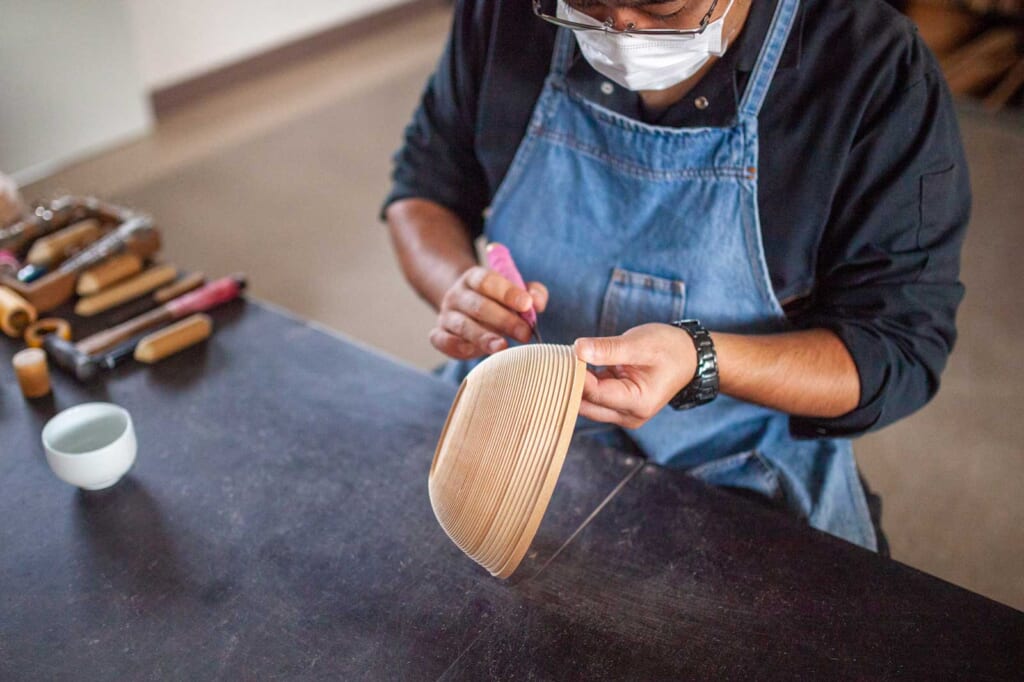
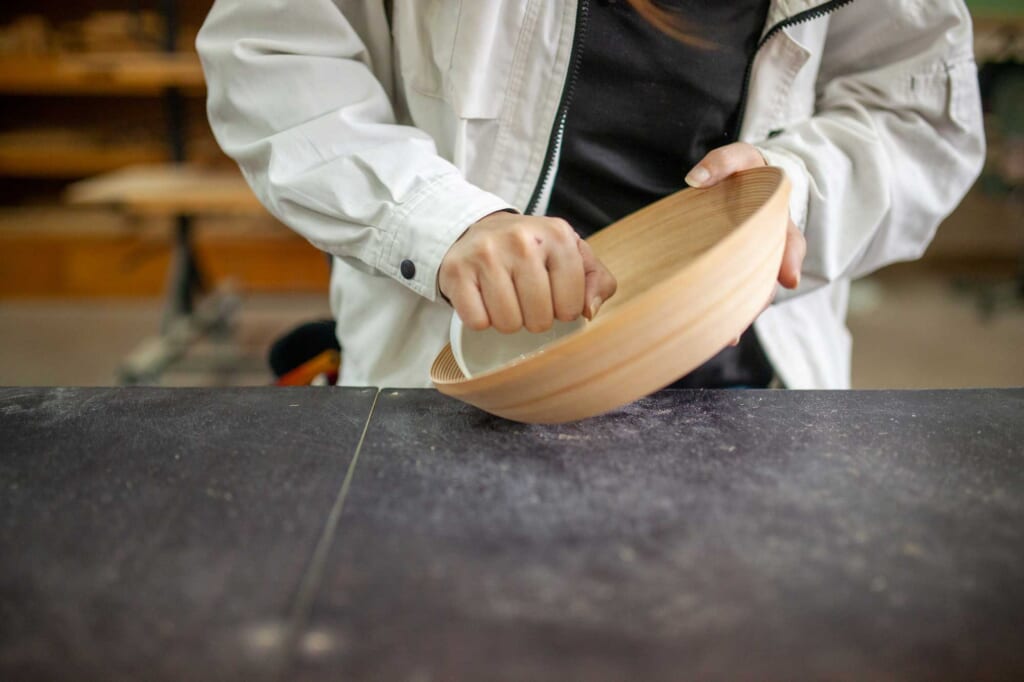
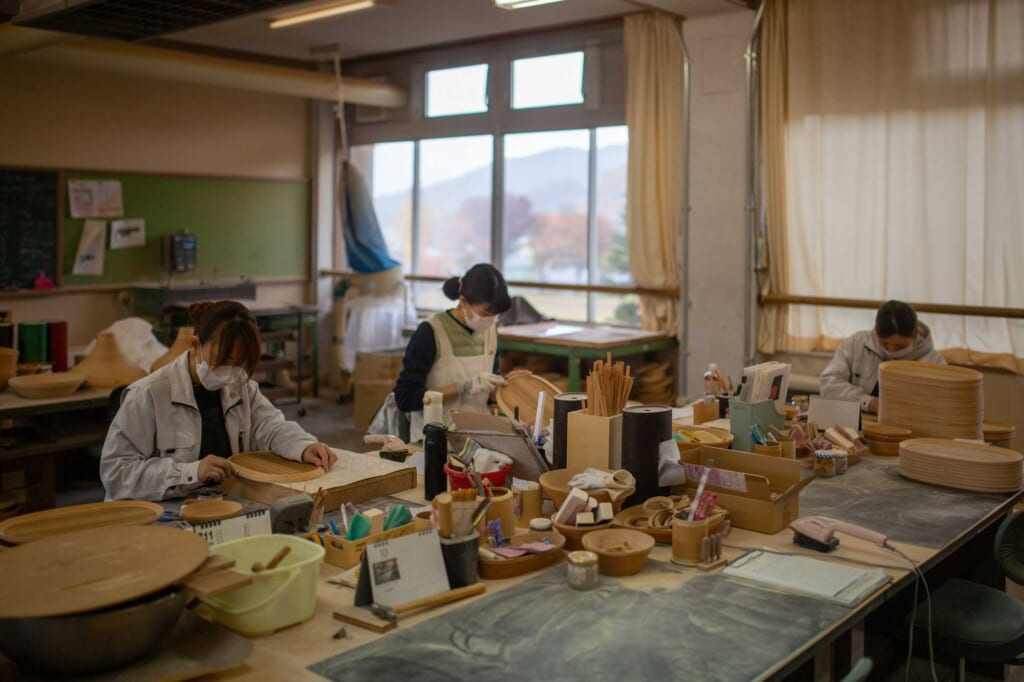
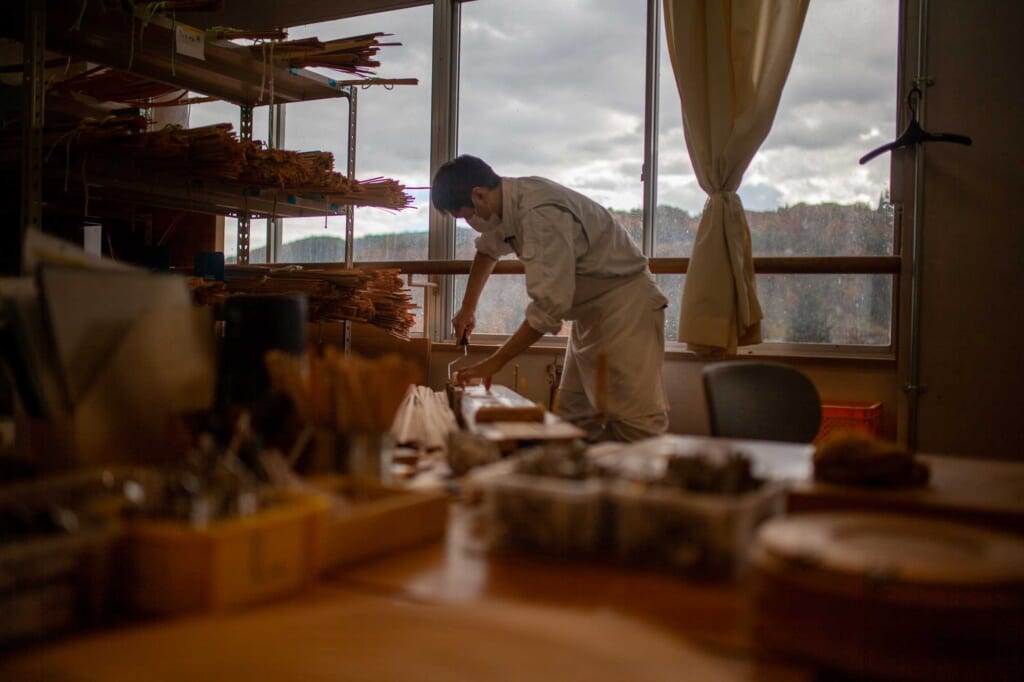
BUNACO uses beech trees — the highest concentration in Japan is in Aomori — the elasticity of which makes it an ideal material for arts and crafts. It is almost a magical experience to watch the artisans turn a flat wooden material into a stylish craft with their bare hands in a matter of minutes. BUNACO also offers workshops in the large showroom where a selection of their products is on display.
KAI Tsugaru: Enjoy the Luxury of KAI in the Forests of Aomori
Aomori never failed to please me in terms of the quality of accommodation and which offers not only quality but also a cultural experience true to the traditions of the prefecture.
Therefore, it is not surprising that one of the 22 KAI hotels, a sub-brand of the luxury Japanese resort brand, Hoshino, is in Aomori. The brand, which is only limited to places where there is a natural onsen hot spring, succeeds in its aim of combining Japanese-style ryokan accommodation with western comforts.
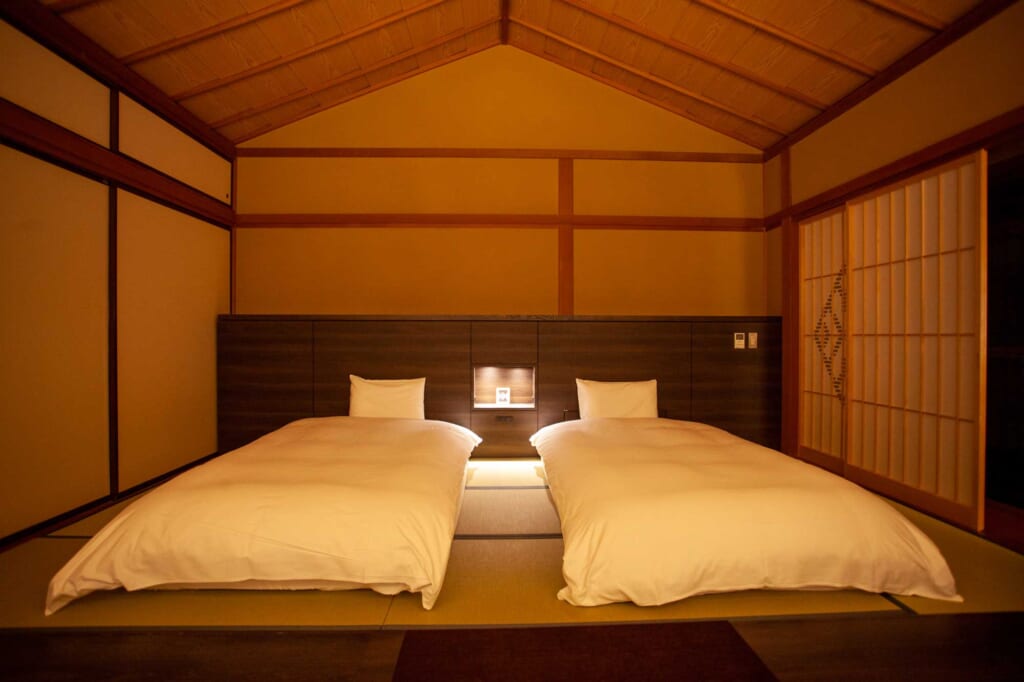
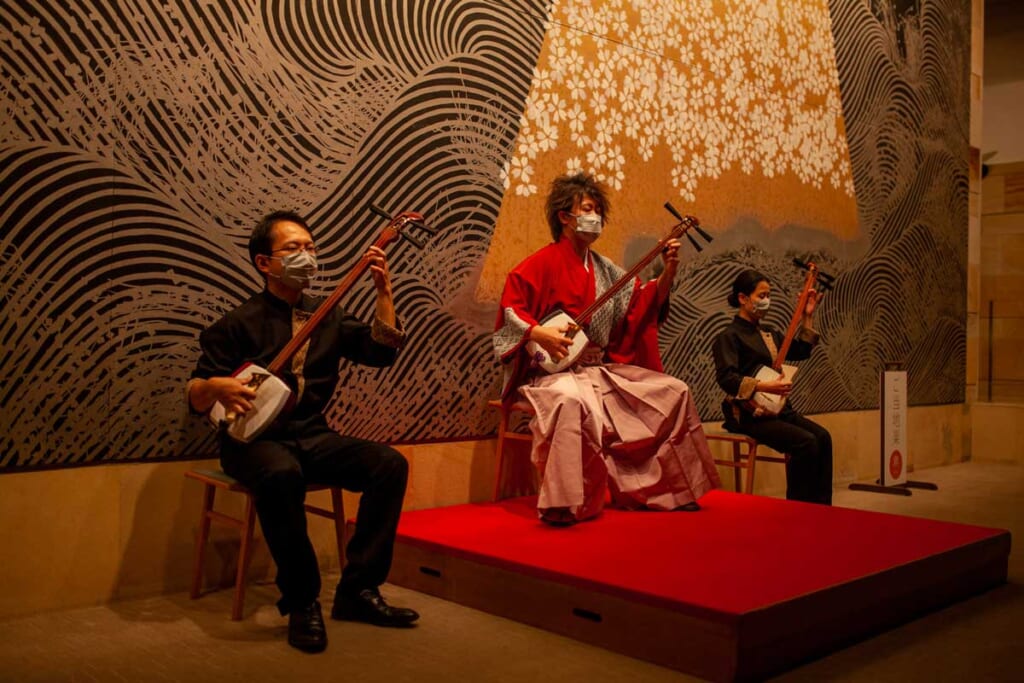
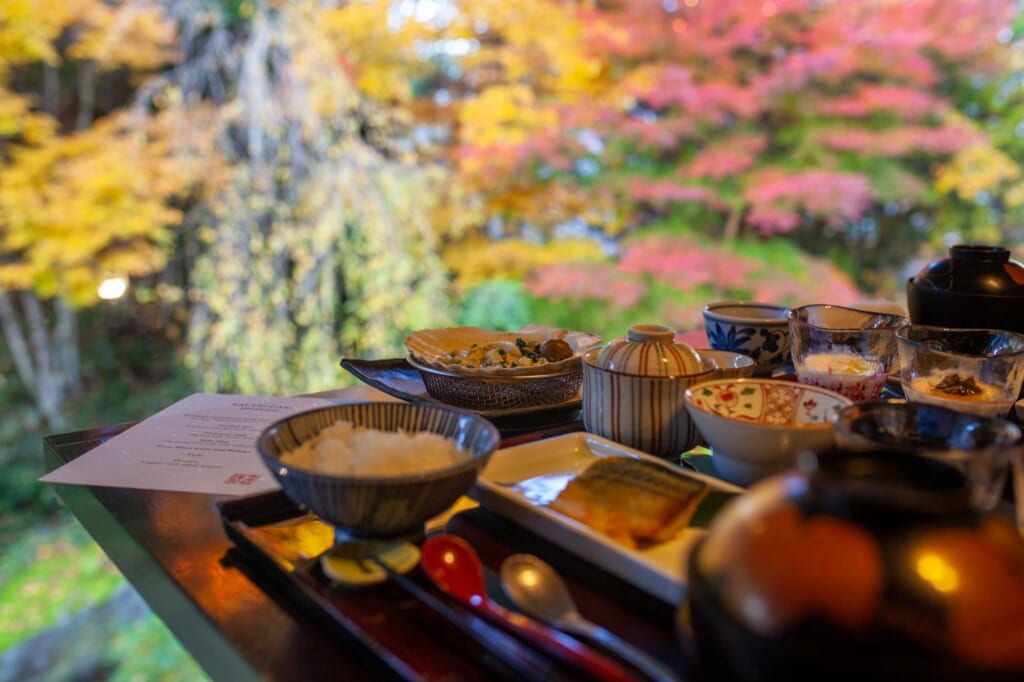
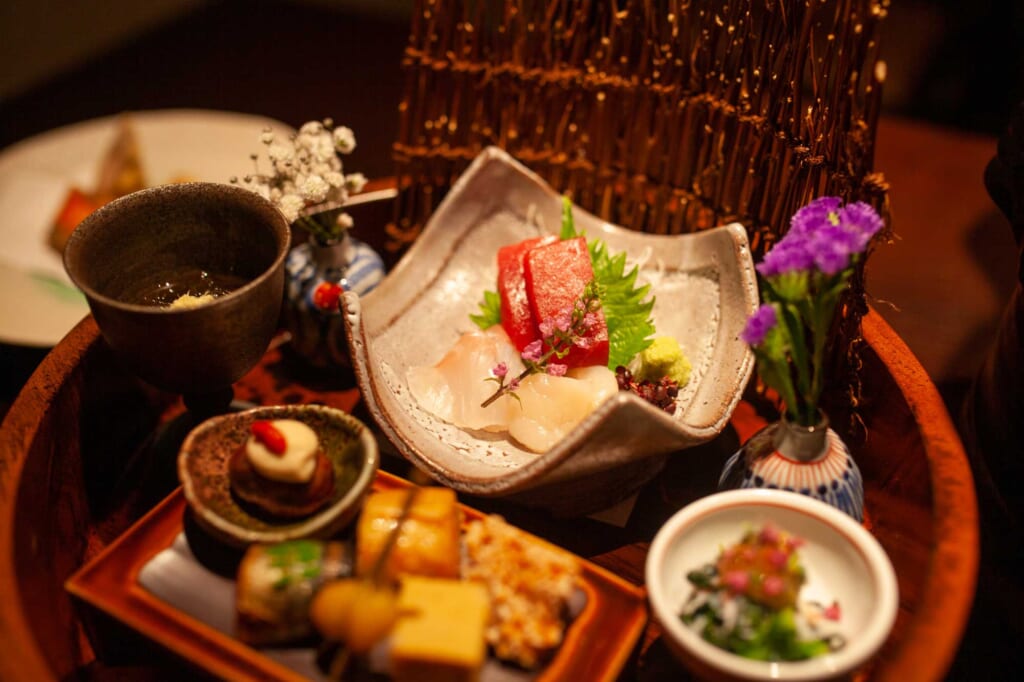
Featuring floor-to-ceiling windows allowing one never to feel disconnected from the surrounding forest, a stay in KAI Tsugaru felt like an experience entailing the best of Aomori in a day. A kaiseki style dining where most groups are privy to their semi-private dining room, followed by a dip in the onsen decorated with Aomori apples, is complemented by another unique treat: a private Tsugaru Shamisen performance by Mr. Shibuya, the national shamisen champion.
Shamisen, the three-stringed Japanese instrument, brings sentiments of rhythm and wild snowstorms (appropriate for snowy Aomori) when played in Tsugaru style. Originally played by blind monks for entertainment to raise money, the instrument and the genre of music now enjoy wider popularity across Japan. In KAI Tsugaru, not only do you get to listen to a live performance, but also take free lessons from the performers who patiently assist each guest in getting the tunes out of the instrument.
Akita: Land of Rice, Breweries, and Hidden Onsen
Our next prefecture was Akita, where 70% of the land is made of forest — a land of heavy snowfall, onsen tucked into deep forests, and some of the best rice and water in Japan — thus many breweries.
Ando Brewery: Traditional Brewery Experience
Ando Brewery, located in the historical heart of Akita, Kakunodate in Semboku city (仙北市)(directly served by the Shinkansen from Tokyo in approx. 3 hours), is a perfect place to start any trip to Akita. The owners of this family-owned business, which will be celebrating its 170th anniversary in 2023, are exceptionally warm people with a modest yet contagious pride for their town. In their brewery, where miso and soy sauce are produced, they entirely rely on hand-brewing techniques and use additive-free, natural ingredients.
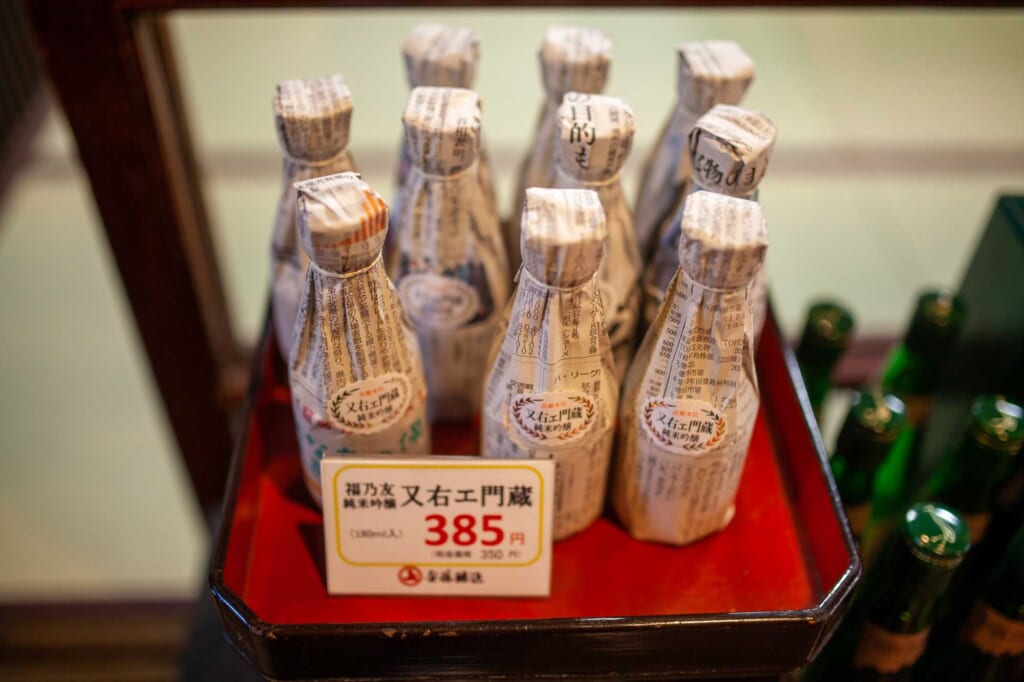

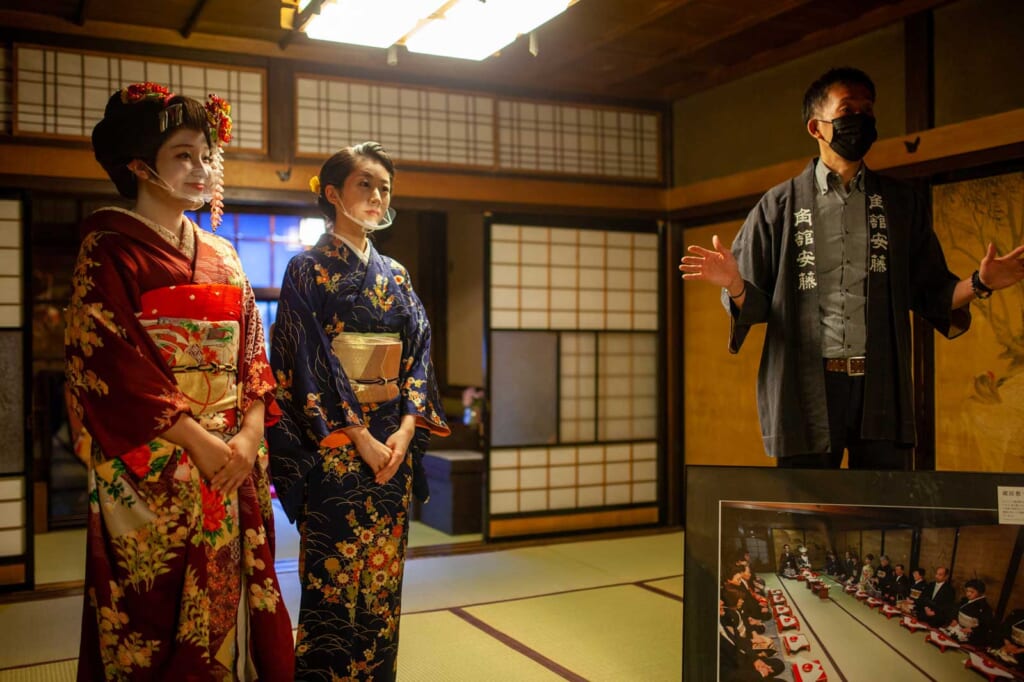
The atmospheric brick building, a reason alone to visit the brewery, is registered as an important cultural property of Semboku City.
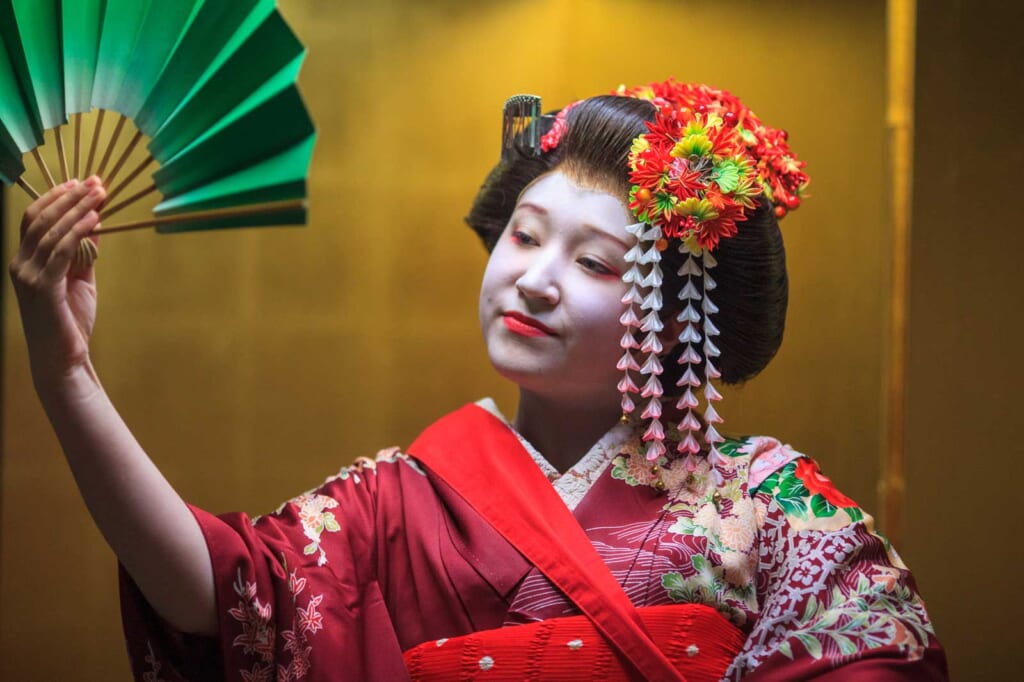
Ando Brewery, in addition to a tour of the facility where we got to learn the brewing techniques, also offers the visitors the unique chance to watch performances by a few of the only five maiko and geisha in Akita. The historical building featuring tatami-style rooms is a perfect place for this lively performance with the intimate and atmospheric setting for its visitors.
Also Read: Autumn in Semboku, Akita: 3 days of historical, cultural, and nature-filled adventures
Yamamo Brewery: A Brewery Like No Other
Yamamo Brewery, located in Yuzawa city, is a brewery like no other. Ando Brewery offers a traditional miso/soy sauce brewery experience, whereas Yamamo, an old establishment dating 1867, is known for its more experimental approach to its brewing practices. The visit to both Yamamo and Ando breweries perfectly complemented each other and allowed us to witness both the traditional and cutting-edge approaches in the field.
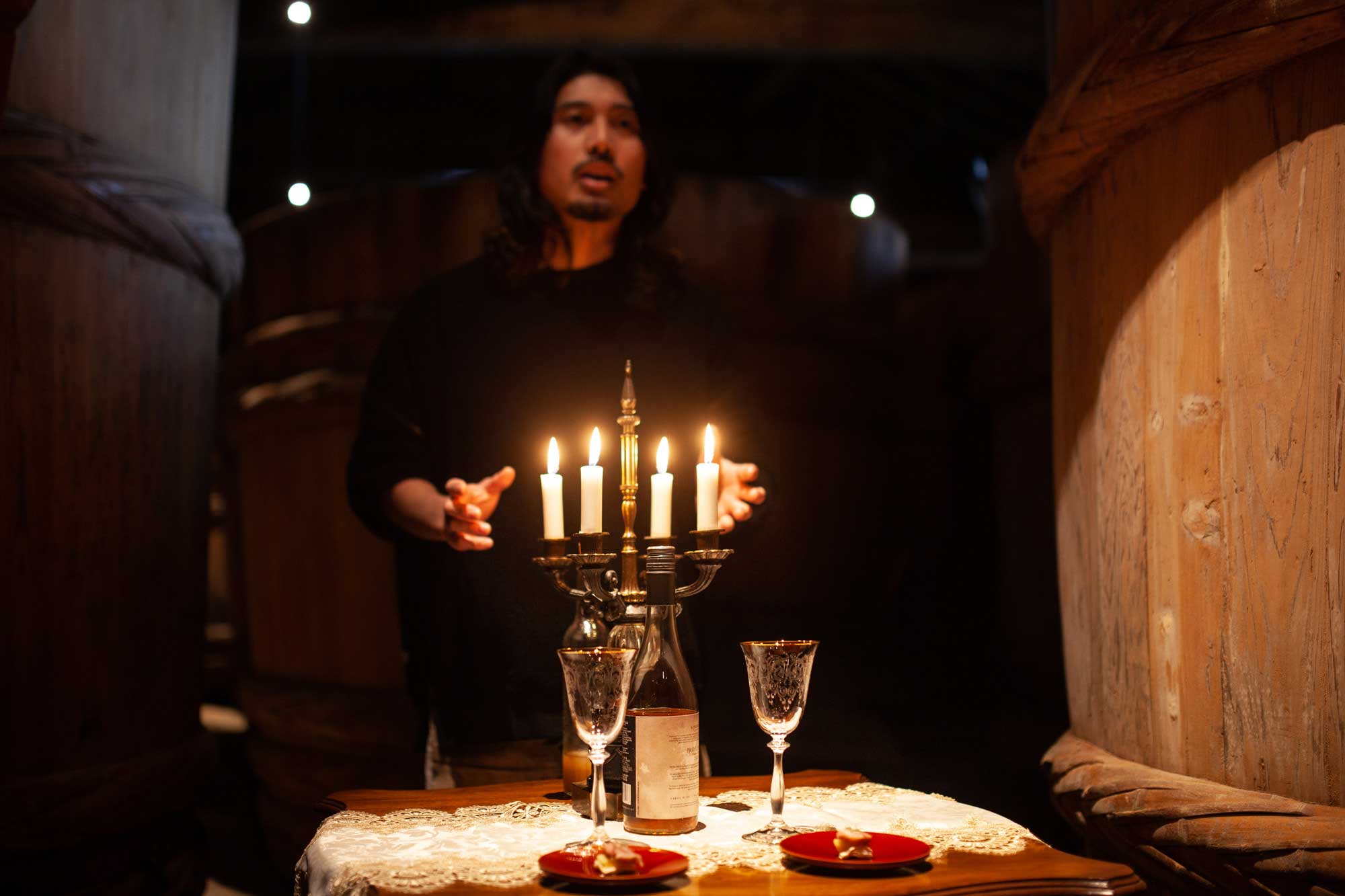
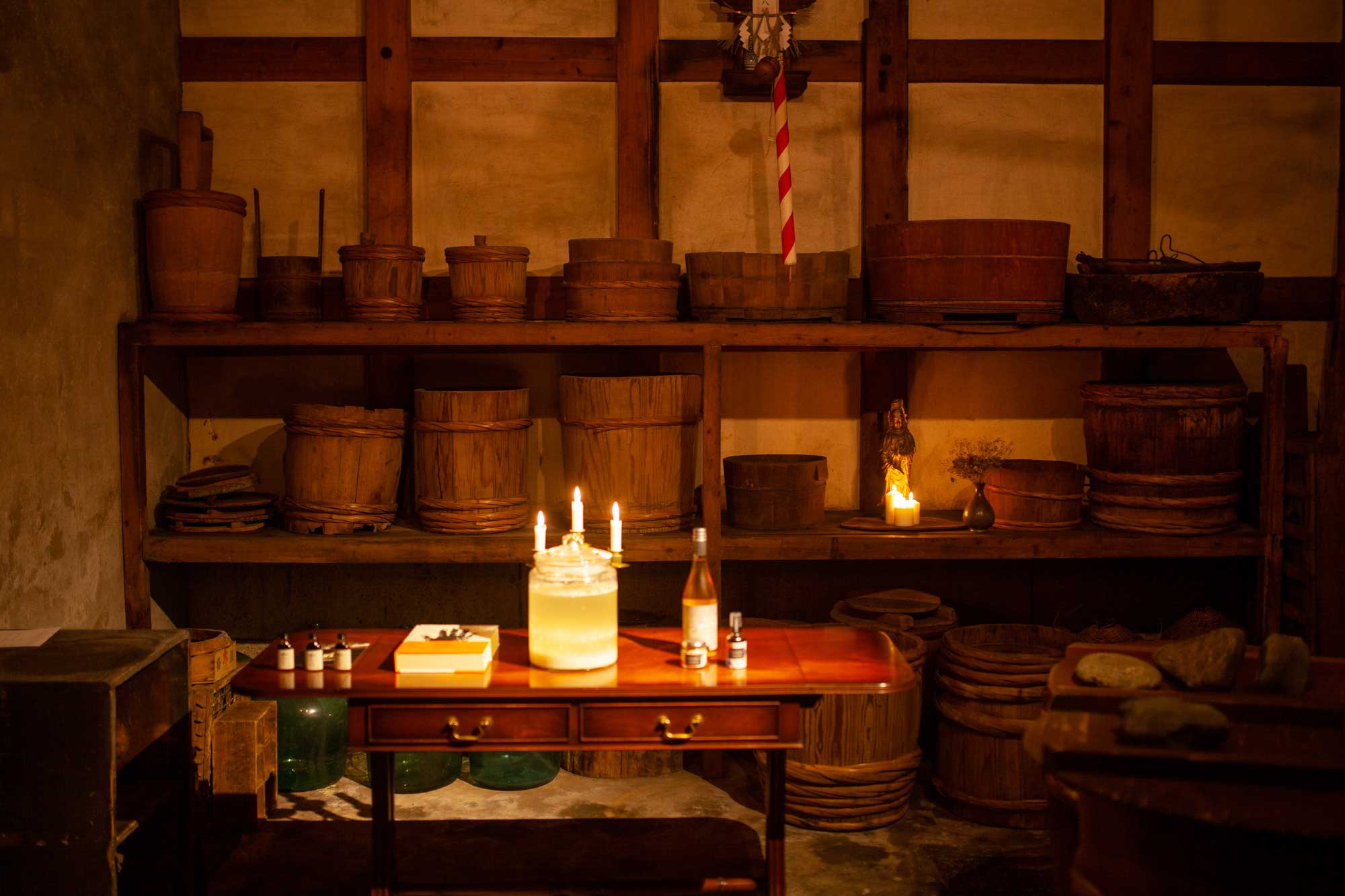
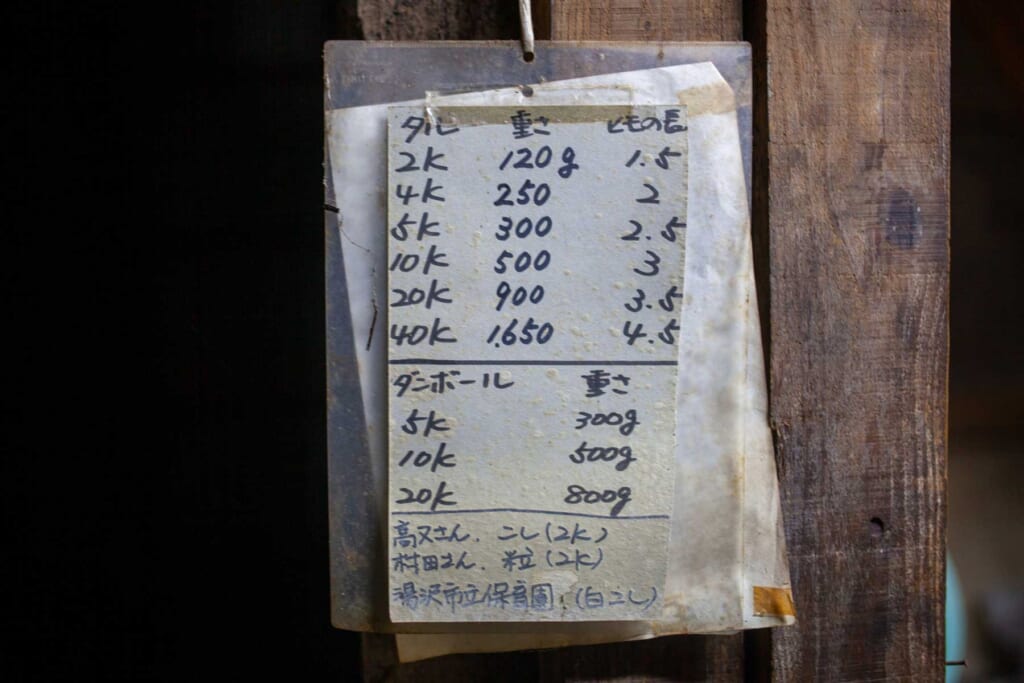
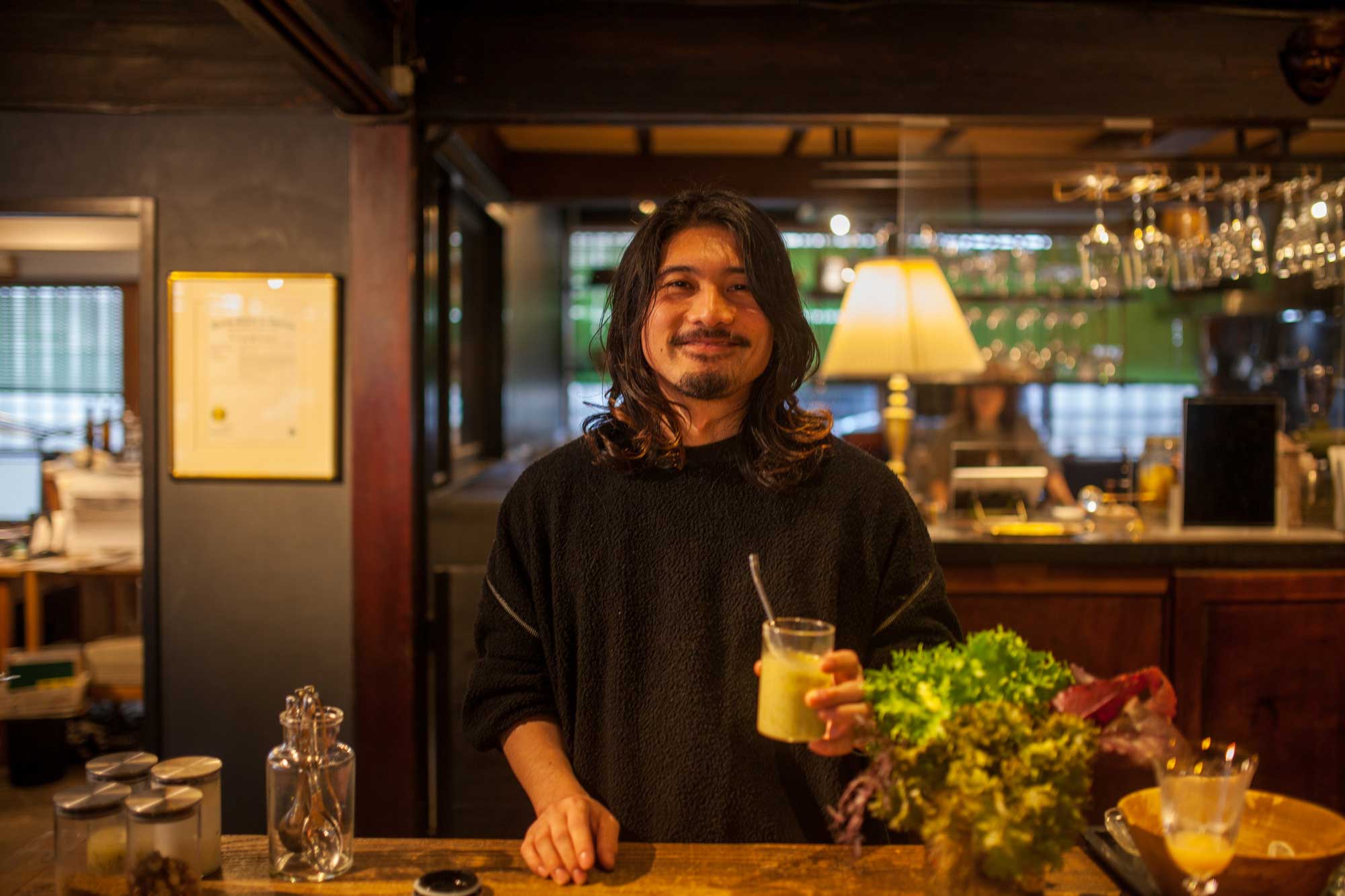
The interior decoration choices, combining a fusion of rustic western style with the sleekness of modern Japanese decoration style in the brewery that also encompass a dining space, offer the first clue that Yamamo is not a traditional place. Yamamo Brewery’s appetite for experiments and new approaches eventually resulted in the discovery of a new yeast that works both in salted and unsalted environments. Yamamo Brewery holds the patent right for this new yeast — VIAMVER — that allowed them to increase the number of products that they could use the yeast for, such as wine-making.
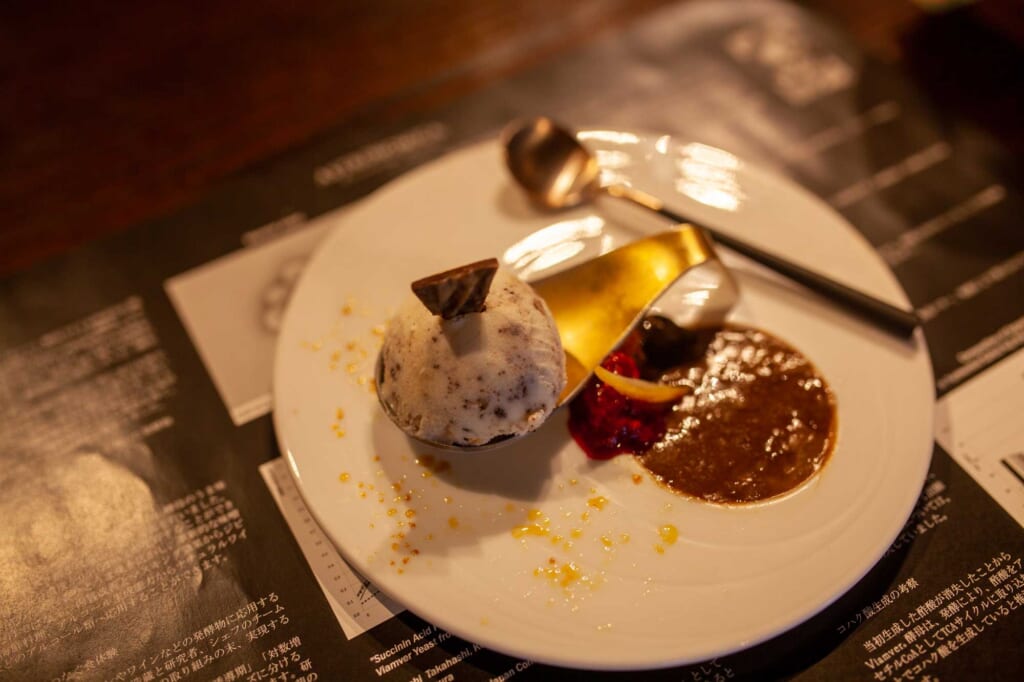
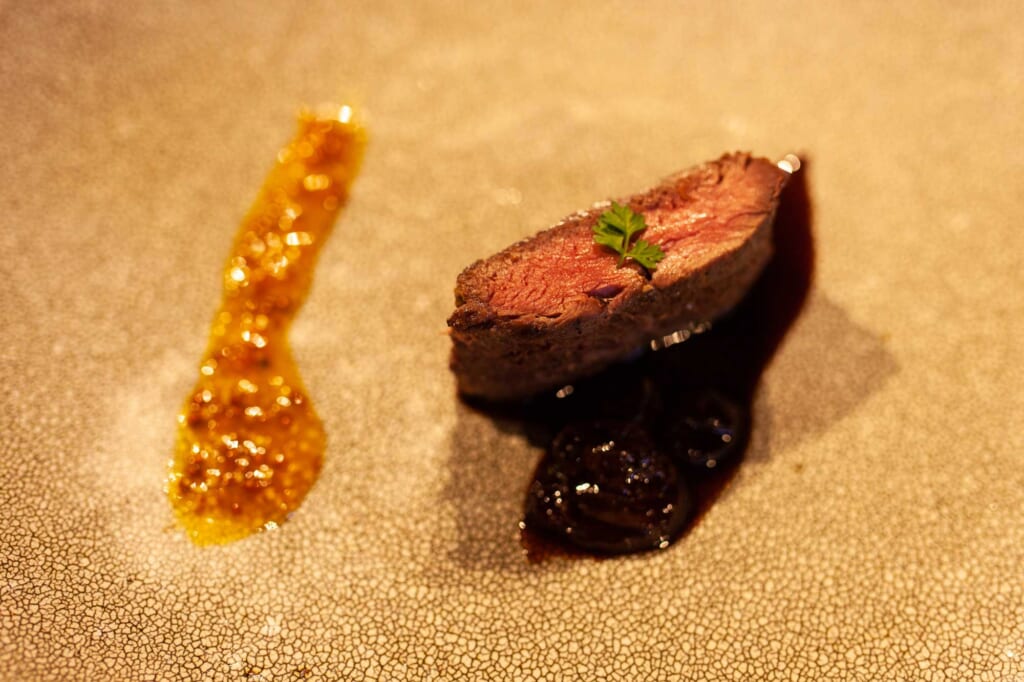
The restaurant, brewery, and shop occupy a large area where I felt like I was walking through the premises of an ancient wine cellar in Europe. Current owner Yasushi Takahashi wanted to create a space where not only their products were sold, but the guests would be privy to experience the whole process. They offer tours of the brewery, where guests can also opt for a tasting course that includes dishes combined with their own miso products. Their fermented venison confit and soy gelato cooked using VIAMVER are highly recommended. Both dishes may sound a little strange on paper but taste delicately wonderful.
Taste the Akita Cuisine in a Local Shop
I highly recommend you skip snacks during your trip to Tohoku as there are many delicious opportunities to taste each prefecture’s cuisine, either with a quick lunch or a full-course kaiseki menu for dinner.
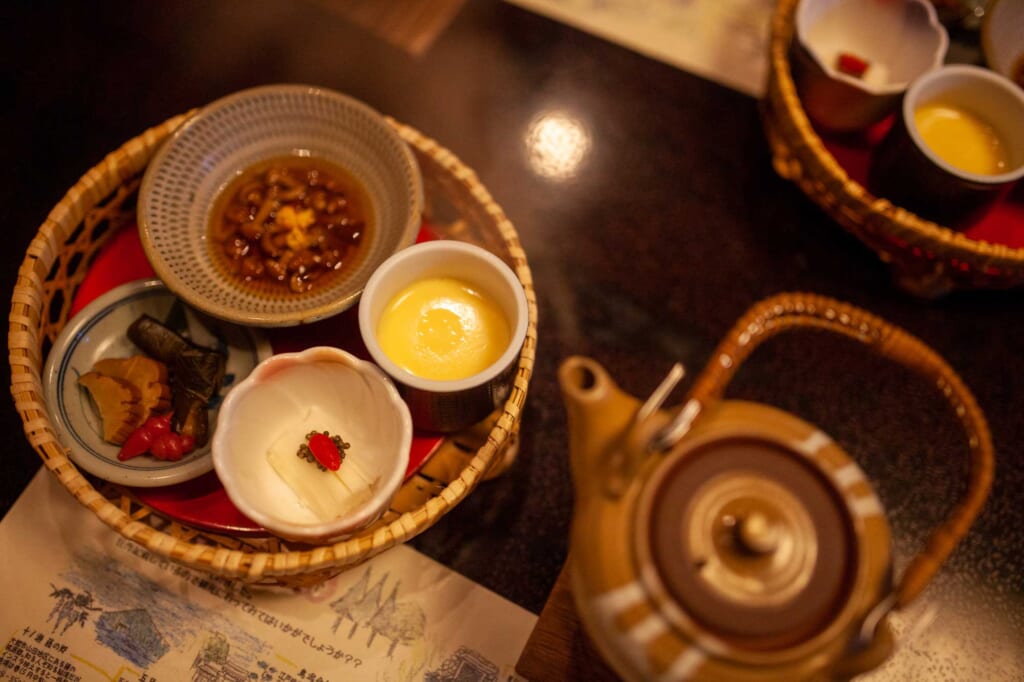
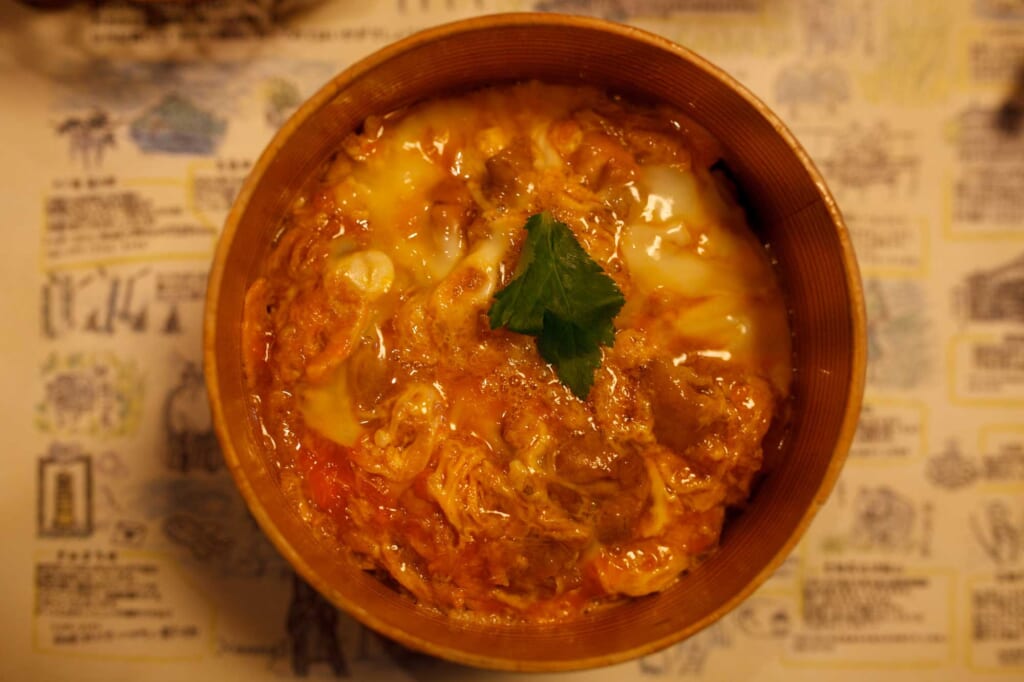
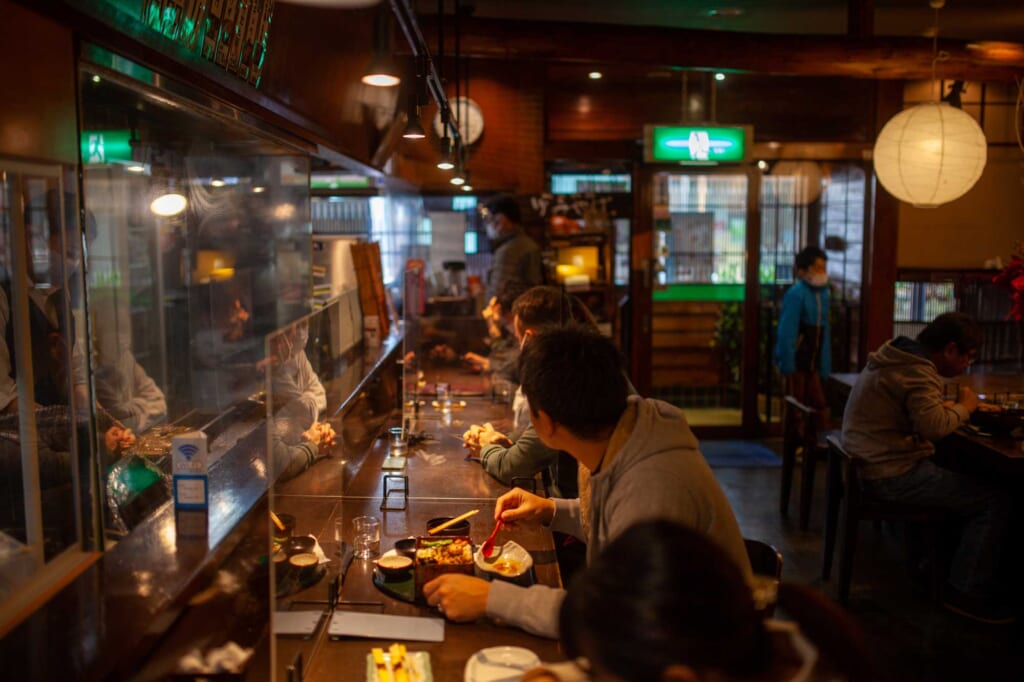
In Odate city (大館市) in Akita prefecture, there are many stores to try one of the tastiest regional dishes of Akita prefecture, Hinai Jirodi chicken. Known for its low-fat nature and rich taste, Hinai Jidori is recognized as one of the three most tasty chickens in Japan. Often served in a wooden bowl and on top of the rice, the dish is so tasty that it was once reserved only for the lords. The whipped egg mixed with chicken and rice enriches the flavor of this already savory dish. Akita Hinai Ya is one of the many shops where you can taste this Akita specialty in a cozy environment surrounded by locals.
Kawatsura Lacquerware: Paint Your Own Plates
Not all the experiences in Akira are related to food. Kawatsura Lacquerware Traditional Craftsmen Center, located in Yuzawa city (湯沢市) in Akita prefecture, is a wonderful place to learn about the process of making elegant lacquerware products from wood and even try your hands on painting one.
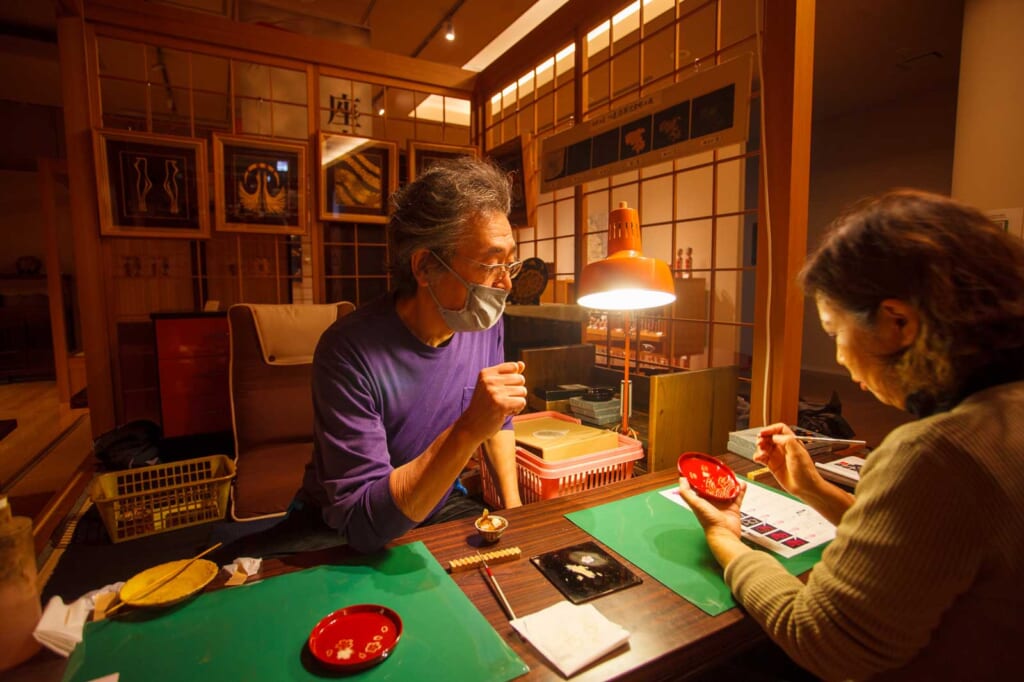
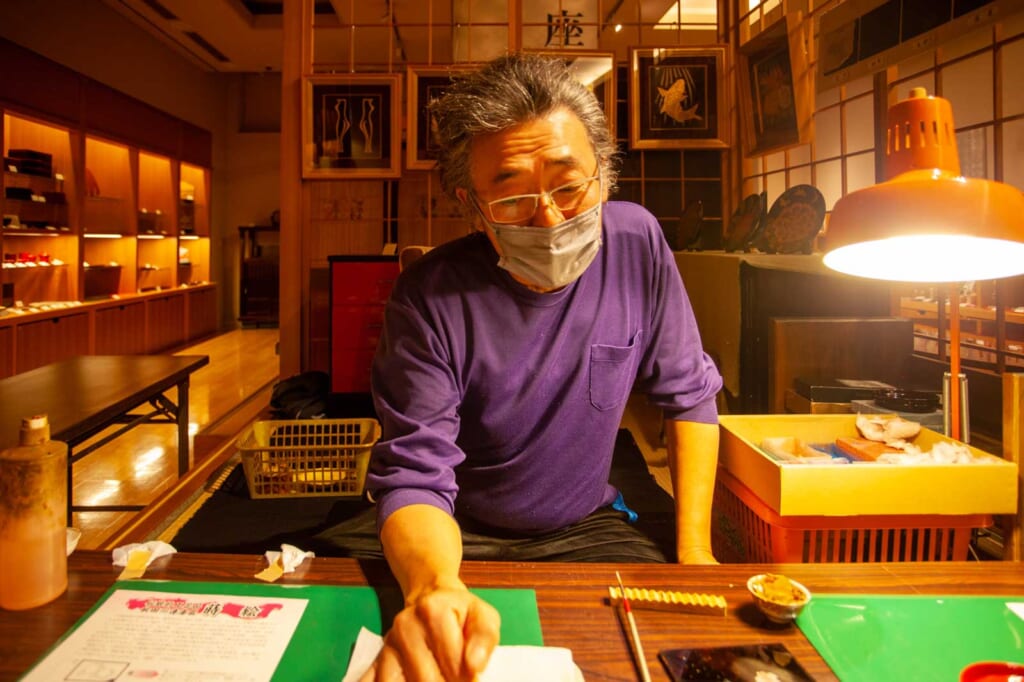

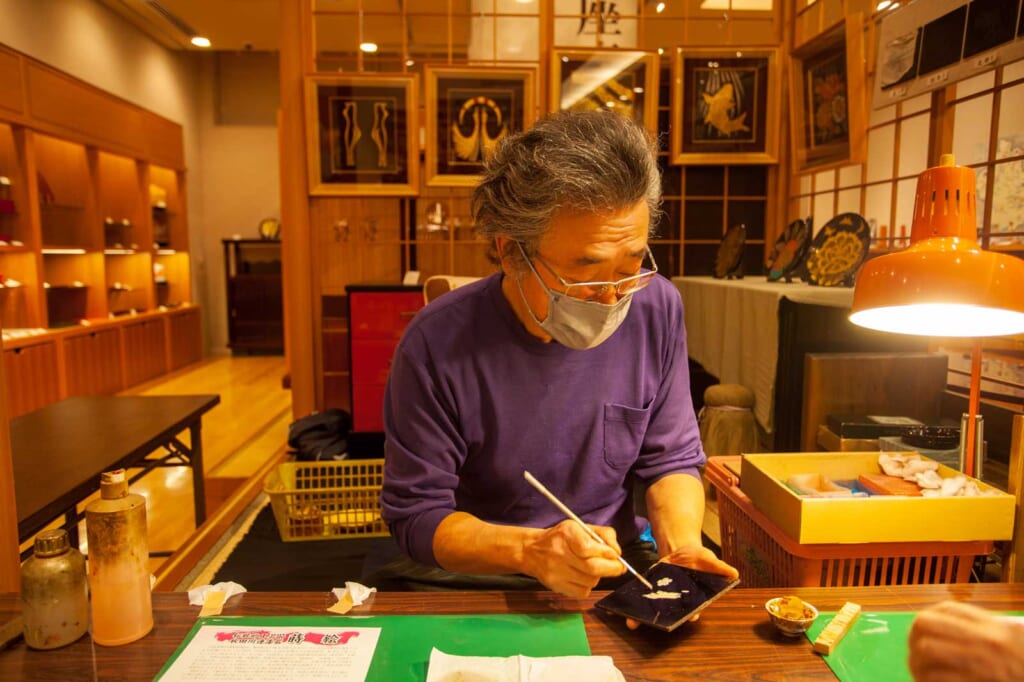
Kawatsura is a town with an 800-year-long history of lacquerware making. Its process is reported to have first started with the application of lacquerware on armors and evolved into a full-fledged industry by the early 17th century focusing on making bowls.
There is a small museum and a large showroom where a wide range of lacquerware products, including bowls and dining sets, are on display. The center also offers two different experiences to the visitors — one is the Chinkin workshop experience involving embedding gold leaf into the engraved pattern onto a lacquered surface, and the Maki-e workshop, where workshop participants trace the underglaze pattern using a brush and lacquer. The workshops are led by experienced craftsmen who patiently guide you through the process.
Also Read: The Traditional Craft in Yuzawa: Kawatsura Lacquerware
Yukemuri no Yado Onsen: Luxury Rooted in Simplicity
After a busy day in Akita, Yukemuri no Yado Inazumi Onsen Hotel, located in Akinomiya Onsen, the oldest hot spring resort area in Akita prefecture, was a perfect place to unwind and counts as one of my best accommodation experiences in all of Japan. The undeniable luxuriousness and stylishness of the hotel lie in the simple yet classy decoration choices, designed to make guests feel at ease the moment they walk in.

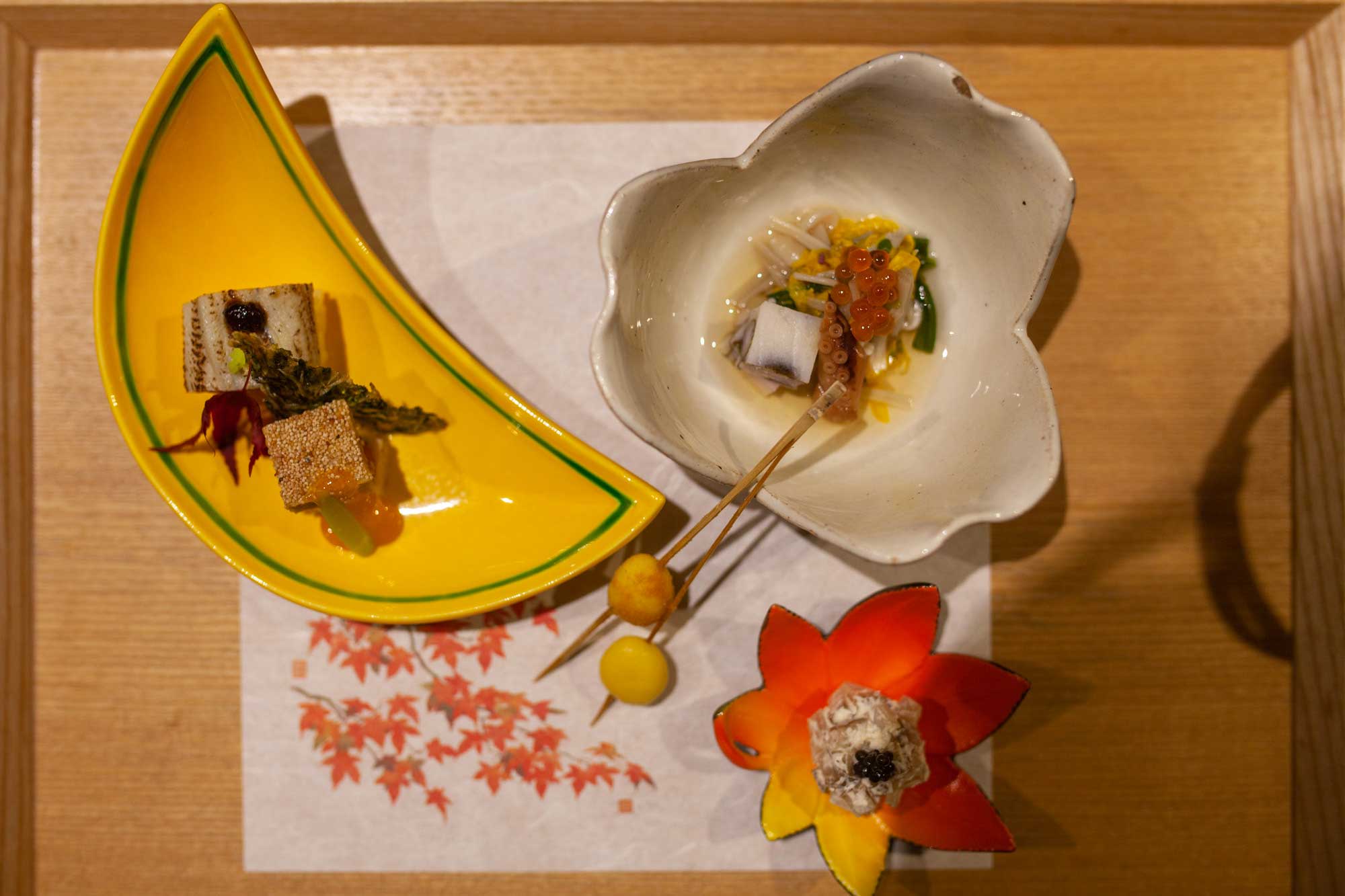
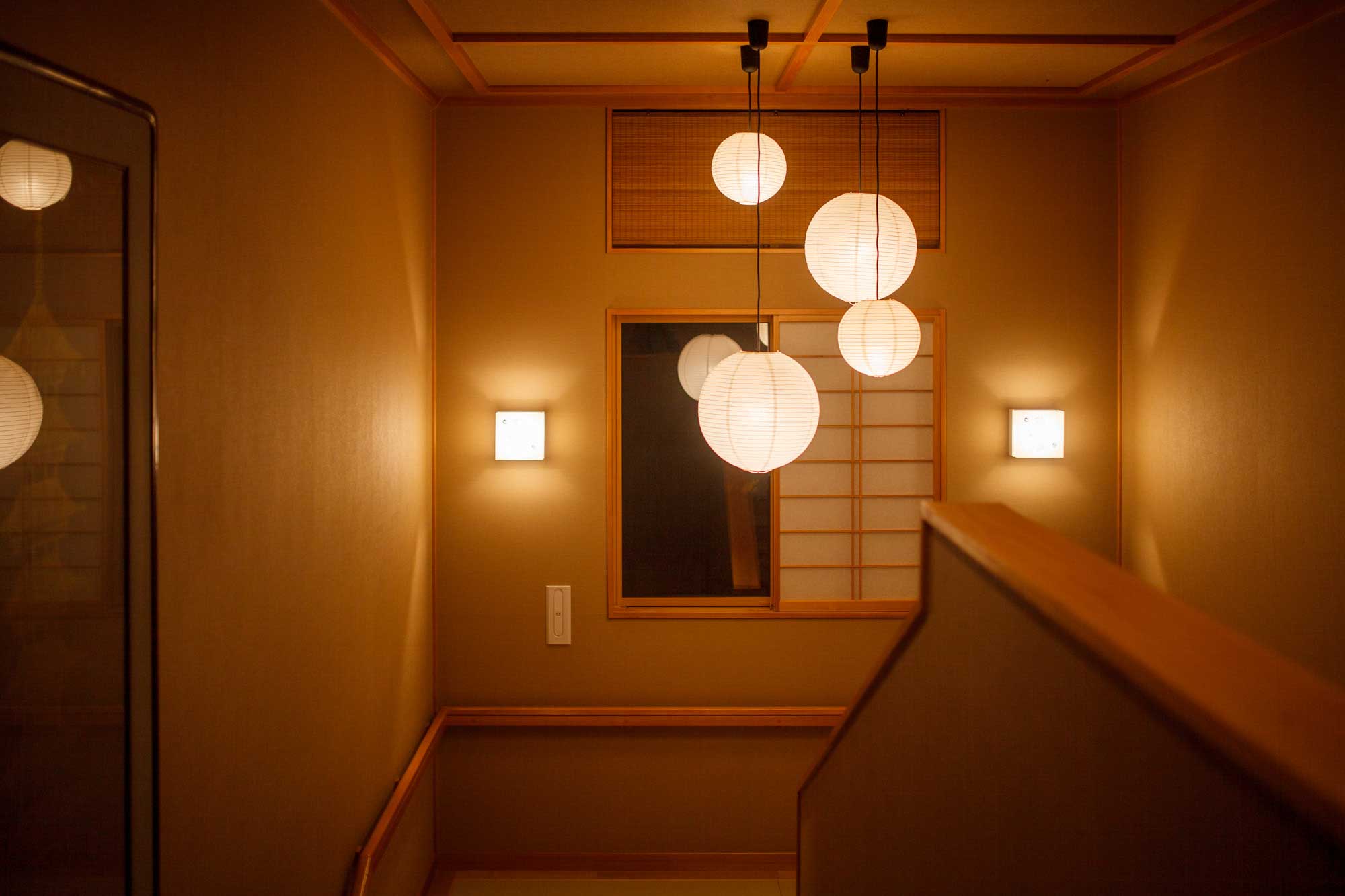
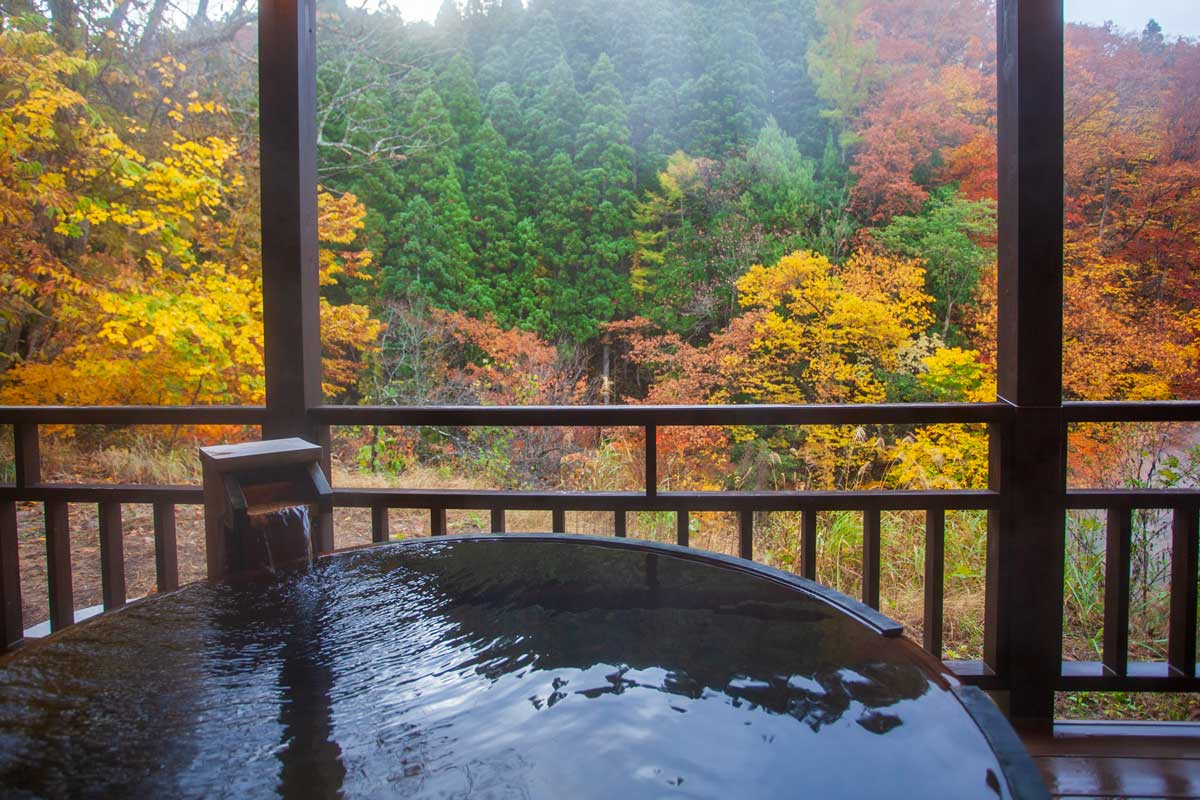
The rooms greeted us with a wooden bathtub filled with onsen water. There is also a common hot spring area that features includes a rotenburo (open-air bath) surrounded by the forest. Yukemuri no Yado is a place to stay for a minimum of two nights to enjoy each facility at the hostel and simply relax. Our dining experience lasted nearly two hours, where we were presented with multiple options for each course that included vegetable, fish, and meat dishes. Each party has their own private dining room that is stylishly decorated with warm lighting, making it a perfect place for a long dinner, engaging conversation, and some sake enjoyment.
Yamagata: Land of Singing Boatmen, Hidden Temples, and Historical Onsen
Yamagata, our next destination, is a prefecture out of the story books. It is a place to forget about the modern day and become a part of historical times visiting towns where people walk holding lanterns, boatmen sing to the river, and thousand-year-old temples waiting to be discovered hidden in the forests.
Mogami River that Inspired Poets
Our journey through Yamagata started with a 12-kilometers long river trip in a traditional wooden boat along the Mogami River (最上川), the seventh longest river in Japan. Being surrounded on both sides by fall colors flashing out of the mountains and the folk songs sung by a traditionally dressed boatman was both a sentimentally and visually charged experience.
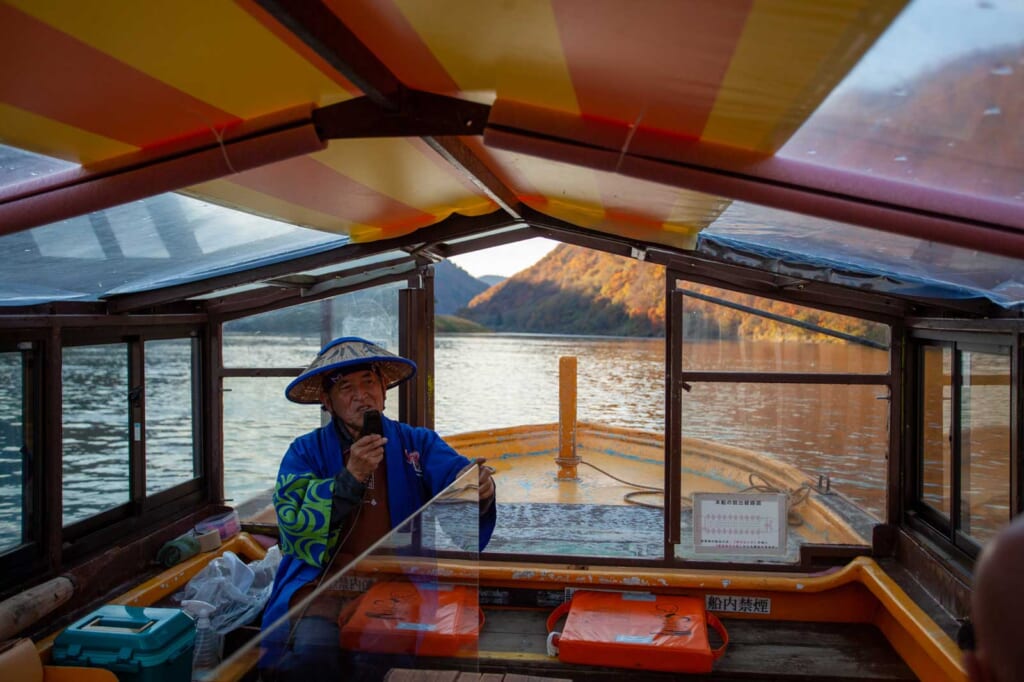
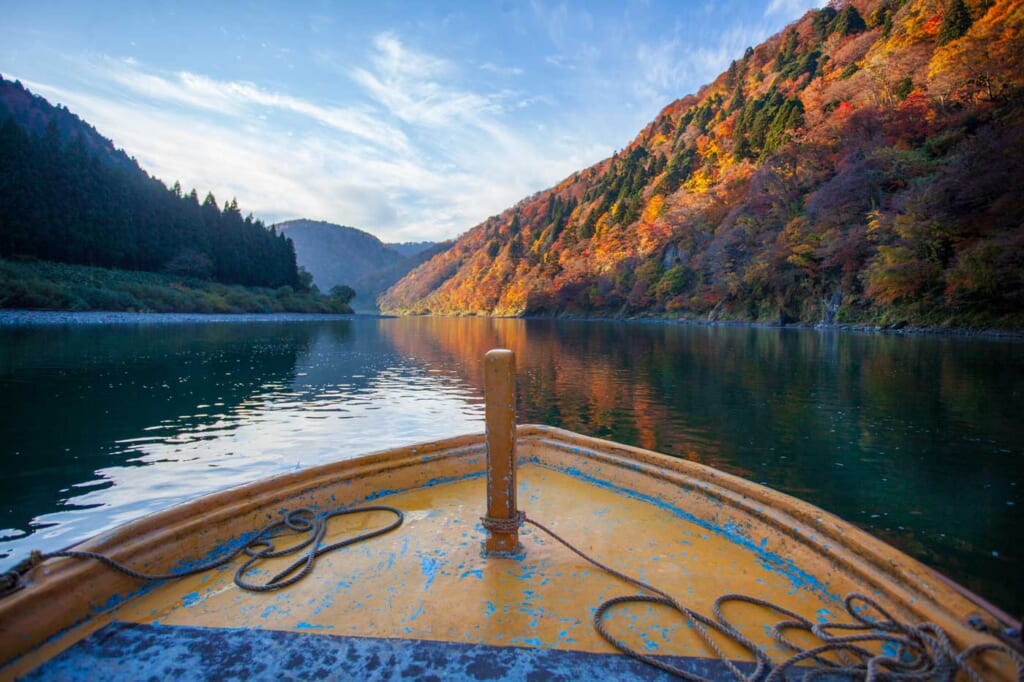
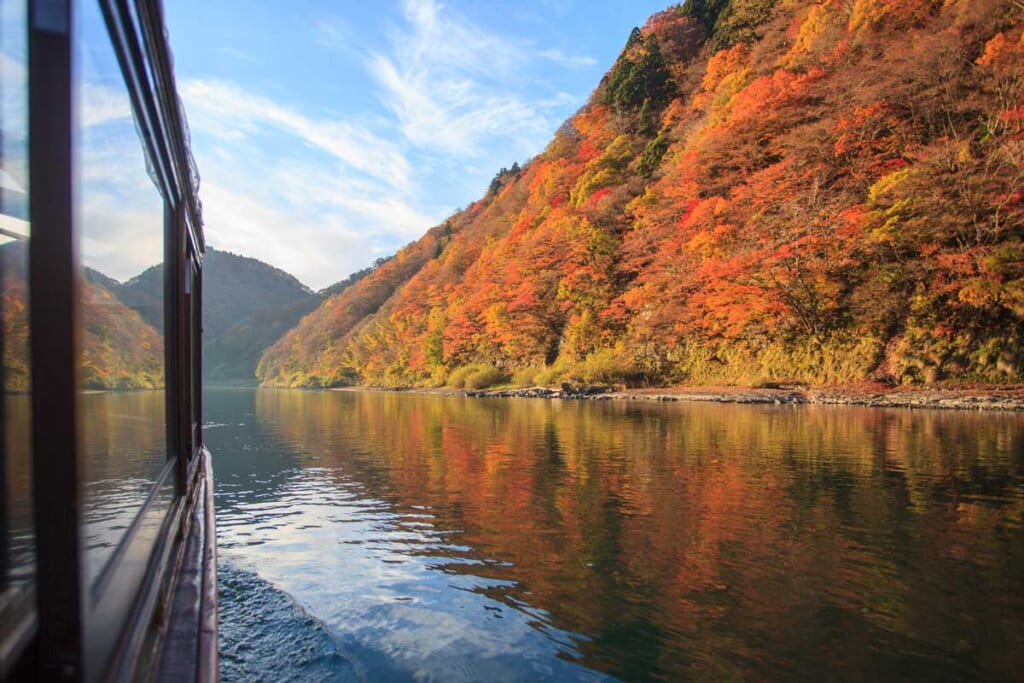
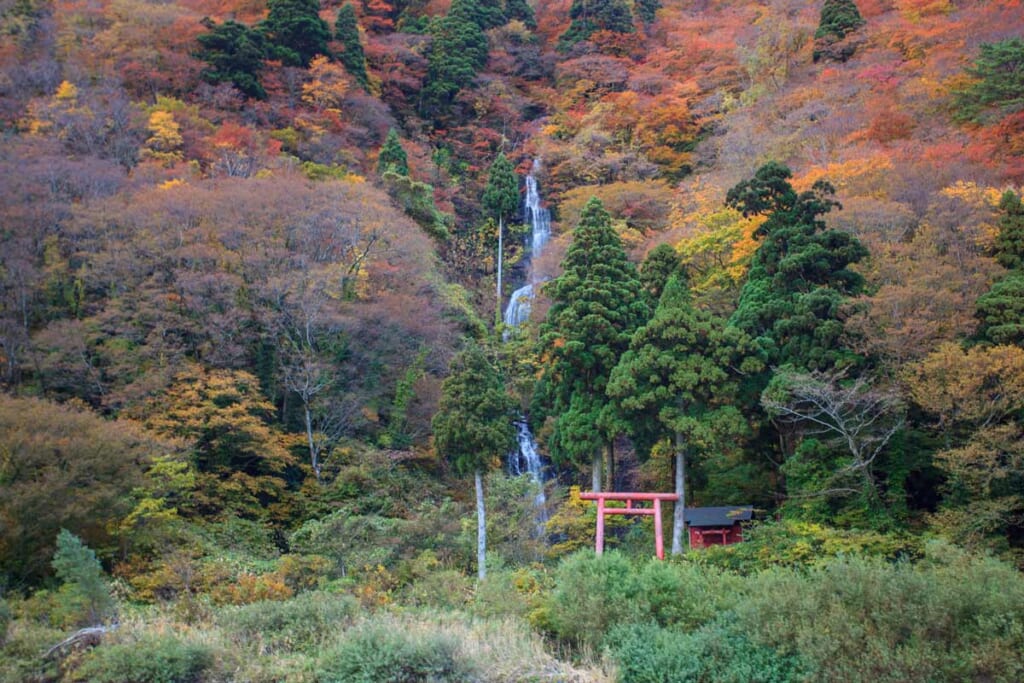
Only a few minutes into the trip, I could relate to the emotions that made the famous Japanese haiku master Basho pen haikus dedicated to the Mogami River and the waterfalls that join the river.
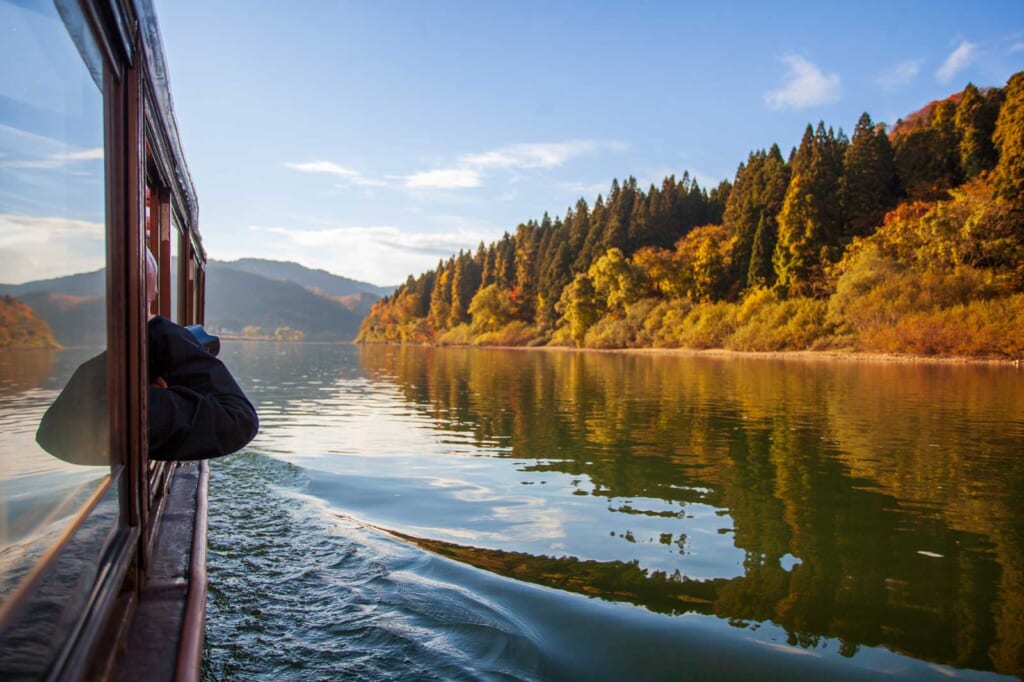
While most of the trip involved calm water, there were a few sections of rapids adding excitement to the trip. I hope to be back in the winter to witness the snow-covered scenery, especially knowing that the boats are equipped with a kotatsu, a Japanese-style table with electric heating underneath.
Ginzan Onsen: One of Japan’s Most Picture-Perfect Onsen Towns
It is hard to believe that Ginzan Onsen, one of the most picture-perfect onsen towns in Japan, nestled within the mountains of Yamagata prefecture, was once a mining site. Ginzan Onsen, as its name suggests, flourished as a large silver mine around 1630. It later became a thriving hot spring resort from around 1740. Even today, the entire town is making efforts to preserve the tasteful inns and keep the tradition alive, and this Ginzan Onsen has become one of the most beloved hot spring resorts in Japan and the world.

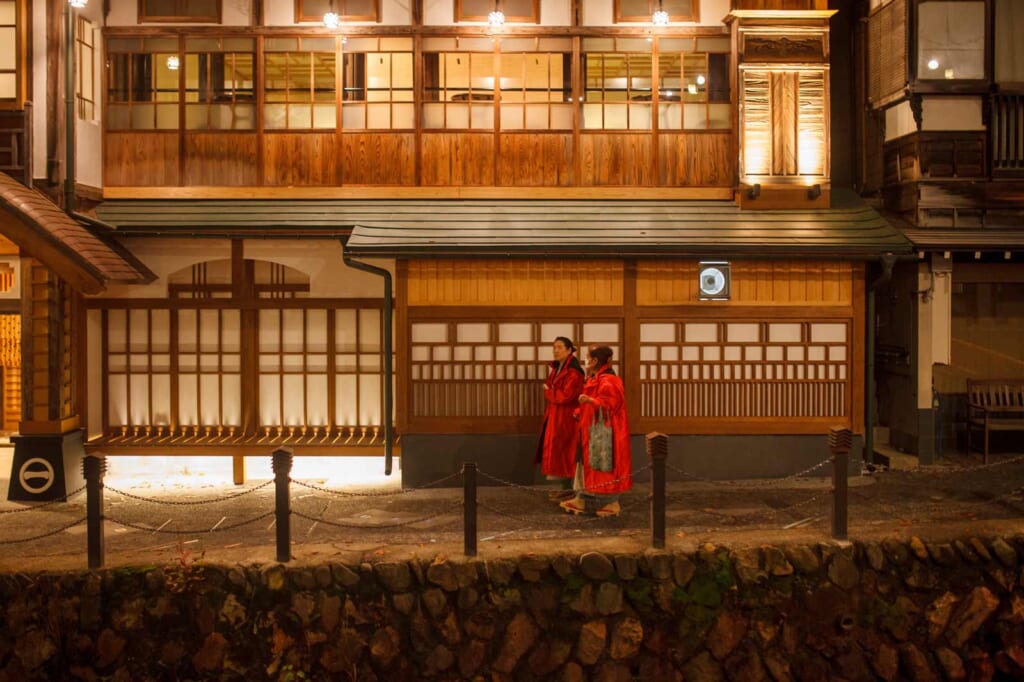
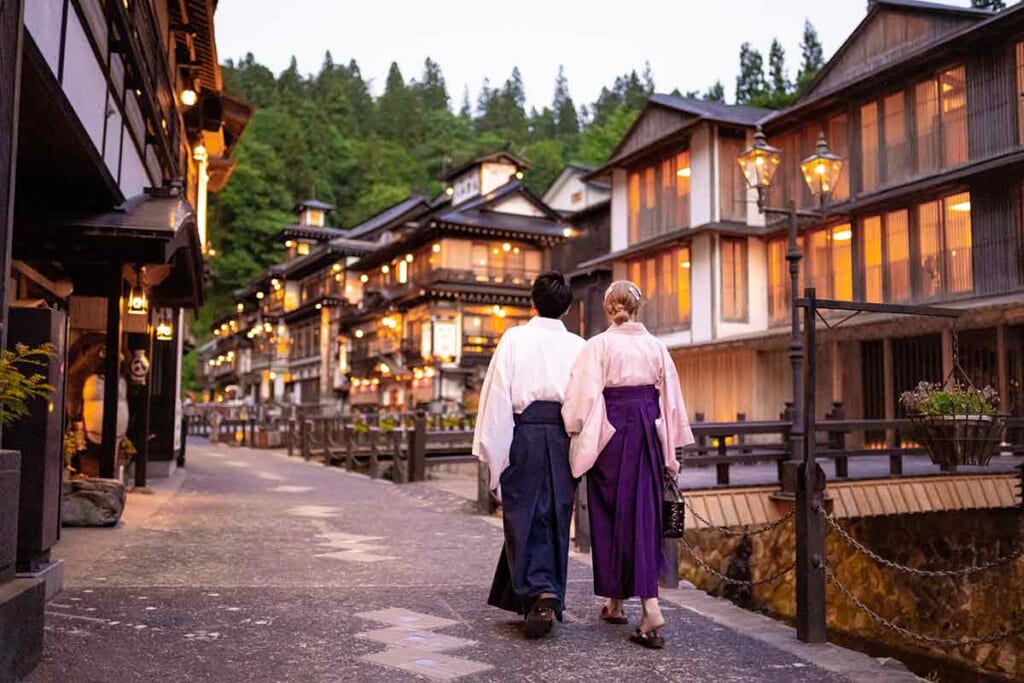
Ginzan River flows through the main street, where traditional style ryokan line up, lit with the warm light coming from these traditional Japanese inns in the evening. Most visitors take evening strolls in their yukata, adding to the authentic appeal of the scenery. The short but picturesque street leads to a 22-meter-tall waterfall that looks particularly spectacular during the autumn season when embraced by the fall colors.
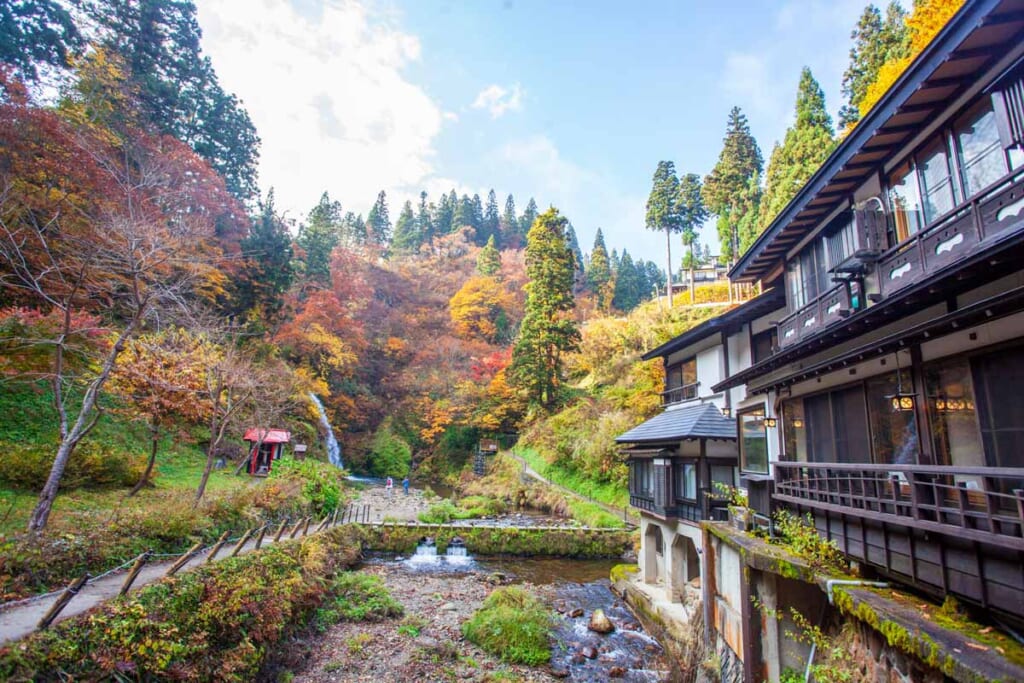
There are multiple ryokans in the area where guests can benefit from a full-course breakfast and dinner menu and free access to the onsen on the premises.
Discover the Hidden Yamadera
Founded in 860 as a temple for the Tendai Sect of Buddhism, Yamadera (山寺) is another Yamagata destination visited by Basho, who composed a haiku dedicated to the stillness of the area. While I visited the main Yamadera Temple before, this trip took me to the intriguingly named Hidden Yamadera, which is reportedly the temple’s original location.
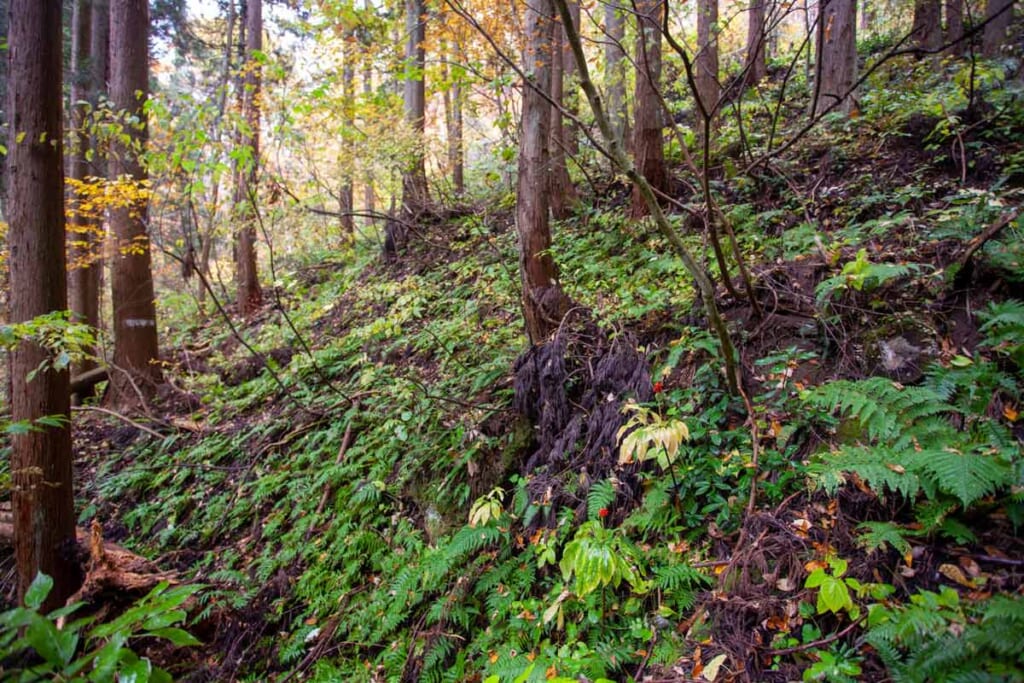
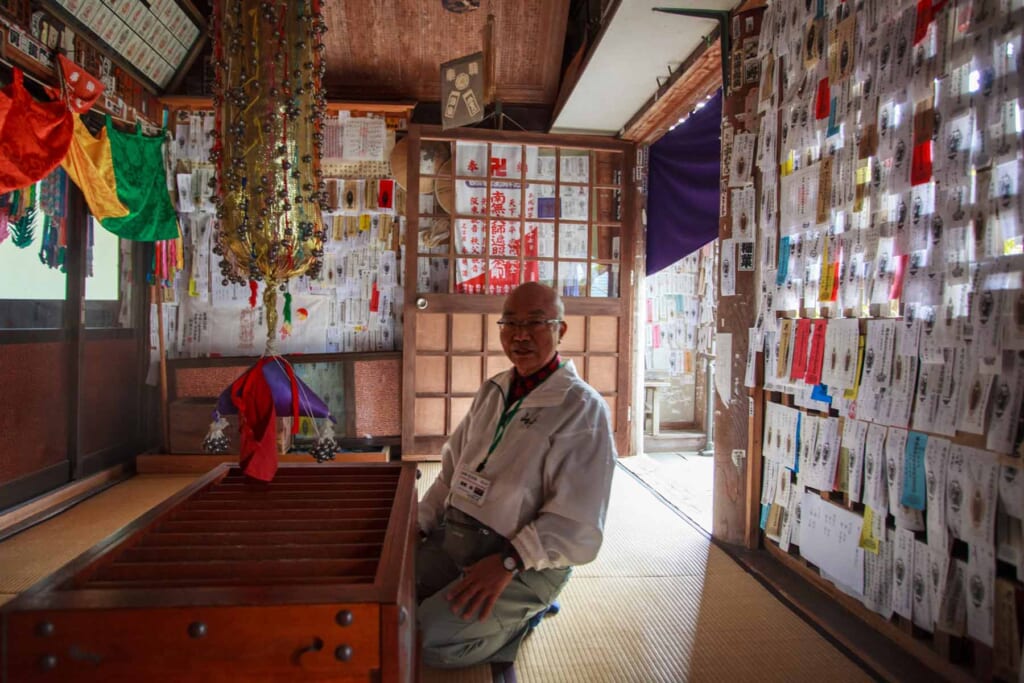
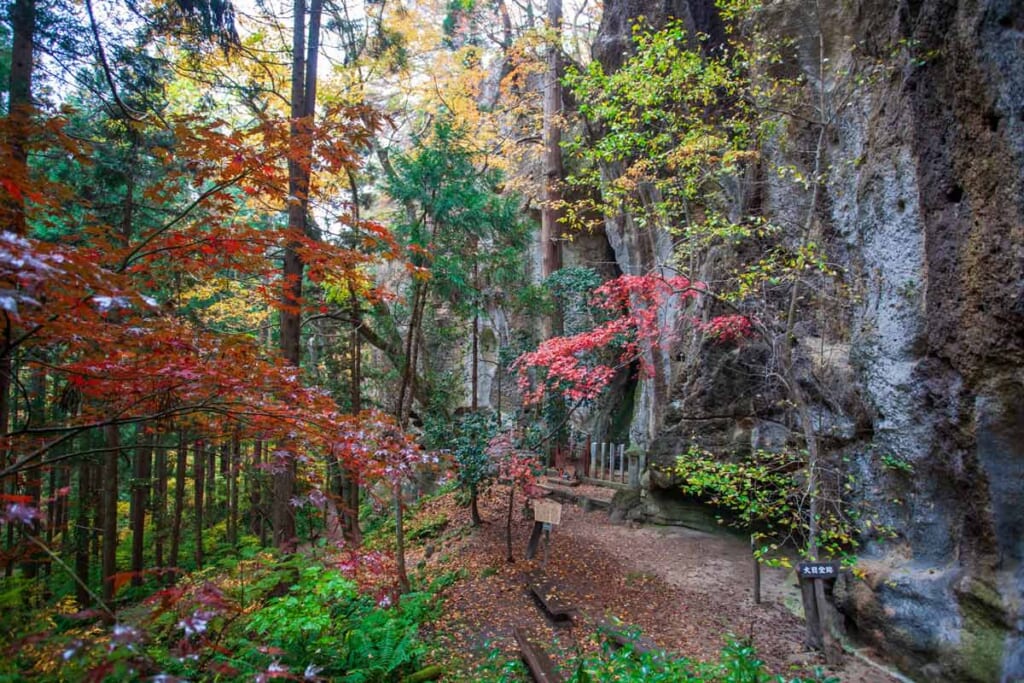
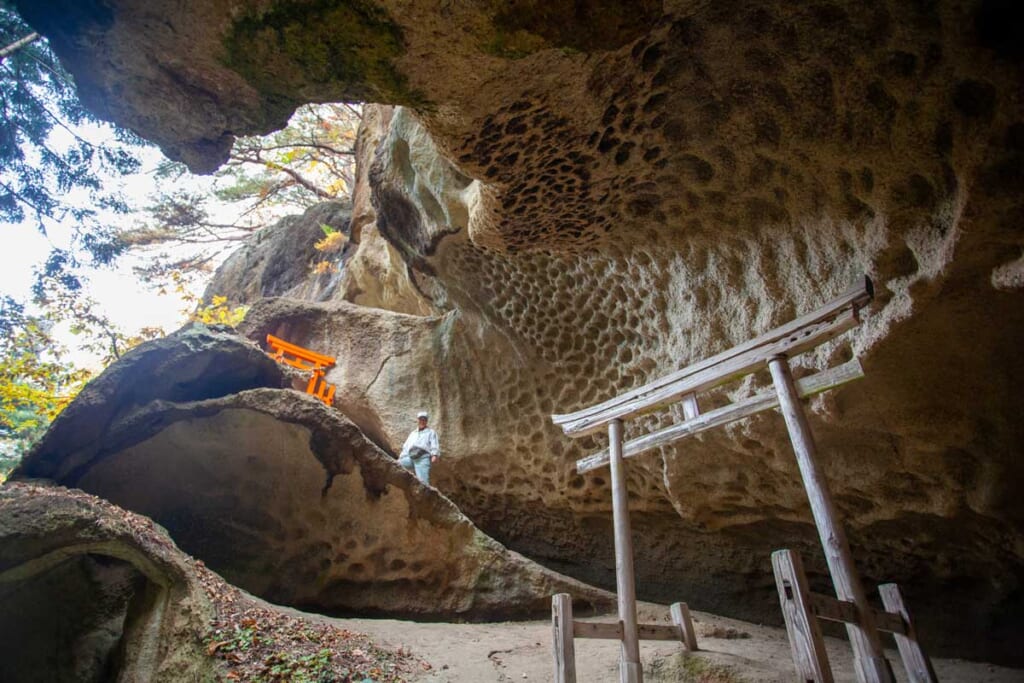
While the main temple complex in Yamadera greets the visitors with modest but striking temple structures, including Kaizando — the founder‘s hall, the Hidden Yamadera has a very different feel with unique rock formations and a modest torii gate dominating the scenery. The hike up to Hidden Yamadera requires an easy 30-minute climb with beautiful forest scenery along the way.
Miyagi: Taste the World Famous Japanese Whisky and Stay in a 600-Year-Old Onsen Town
The beating heart of Tohoku, Miyagi prefecture, is home to lively Sendai city (仙台市) easily accessible with a 1.5-hour Shinkansen ride from Tokyo. Also serving as a transportation hub for the rest of Tohoku, the prefecture also hosts a wide range of traditional ryokan inns with hot springs, and Japan’s gift to the world, the Nikka Whisky factory.
Learn the Process Behind World Famous Nikka Whisky
Nikka Whisky, established in 1934 at the Miyagikyo production facility, occupies a place that is unusually welcoming and picturesque for a production facility. Surrounded by mountains and dominated by trees, the atmosphere is a reason alone to feel at ease long before the whisky tasting starts. The calming atmosphere is not a coincidence, but a result of the three rules that the founder Masataka Taketsuru set when building the facilities — no electric poles, no cutting of trees as nature makes good whiskey, and brick facility buildings.
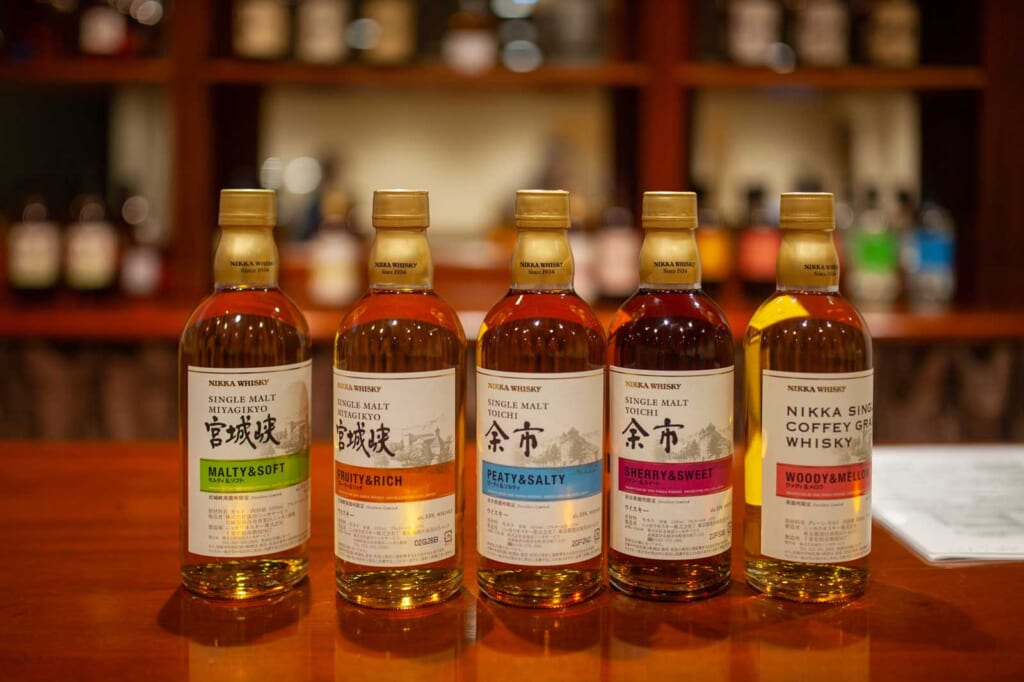
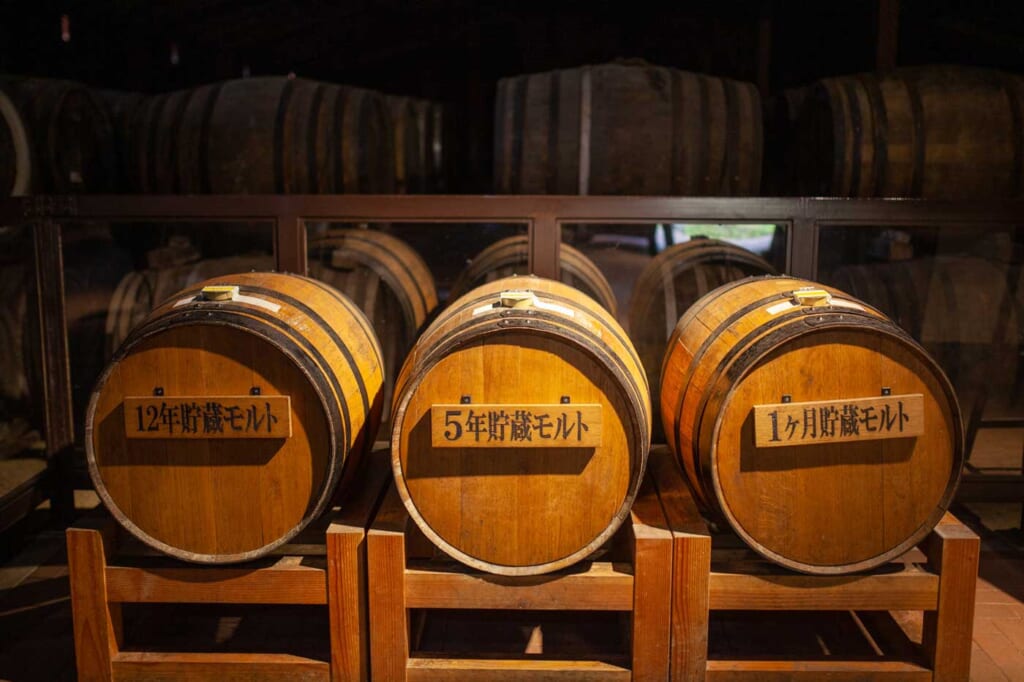
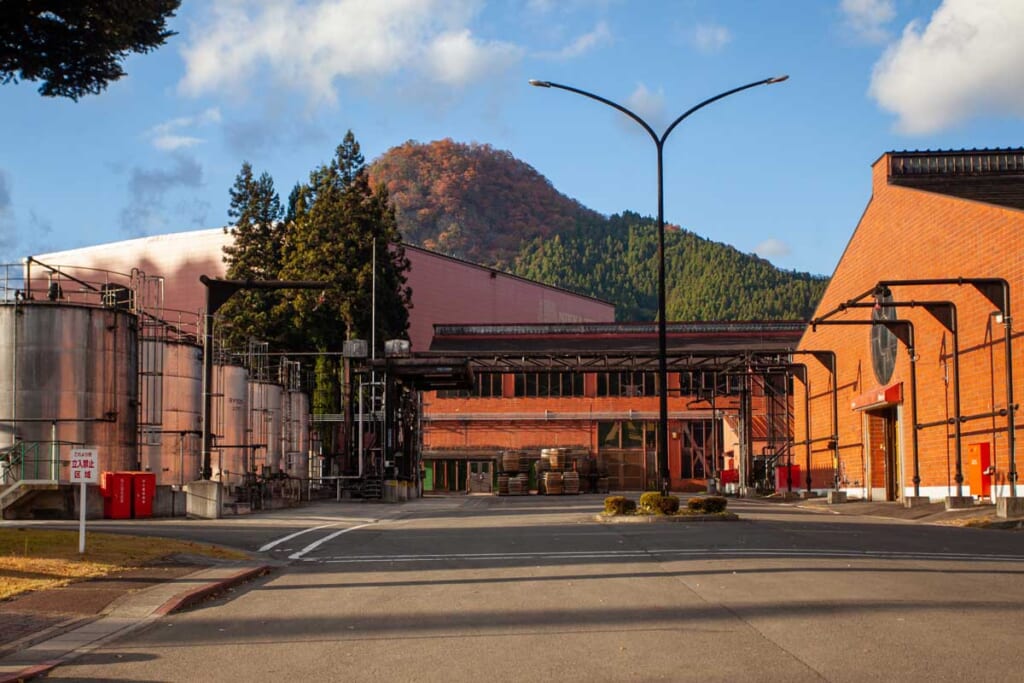
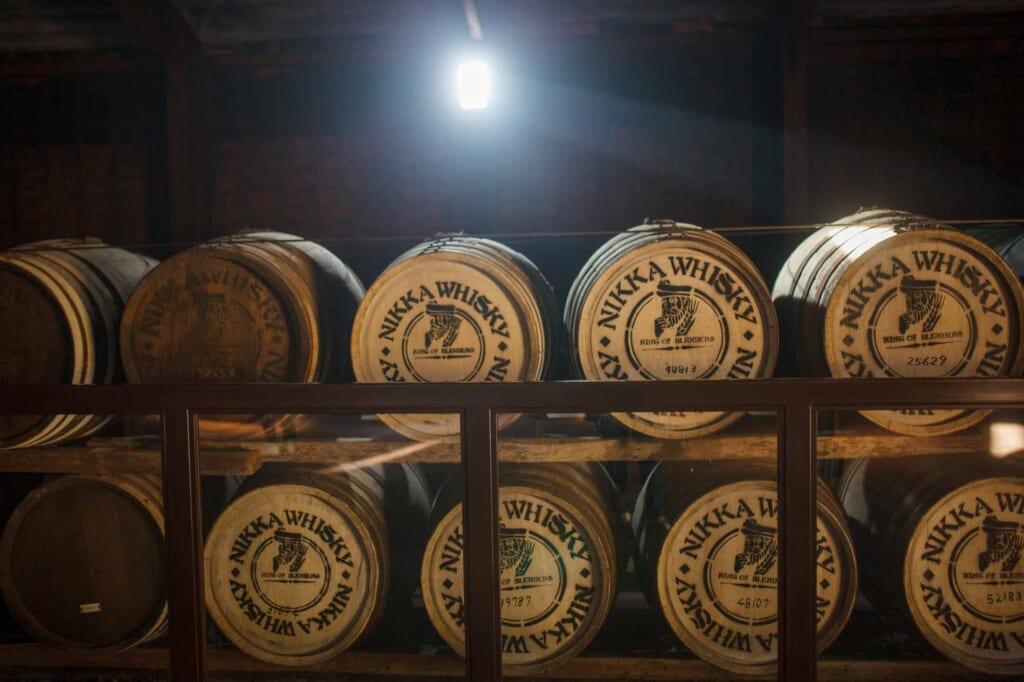
Visitors are given tours of the facility accompanied by a company officer, and the explanations are put together in a manner that could be easily understood by those not familiar with the whisky brewing and distilling process. The factory offers both free and paid whisky-tasting experiences in addition to a paid whisky-mixing workshop where visitors can mix (and taste) their own drink under the guidance of a mixology specialist.
Yunushi Ichijo: Get Lost in an Edo Period Ryokan
In the old yet perfectly maintained hot spring ryokan of Yunushi Ichijo, the rooms are spacious and comfortable, and the onsen water is delightful, but it is the dining experience that makes the facility stand out.
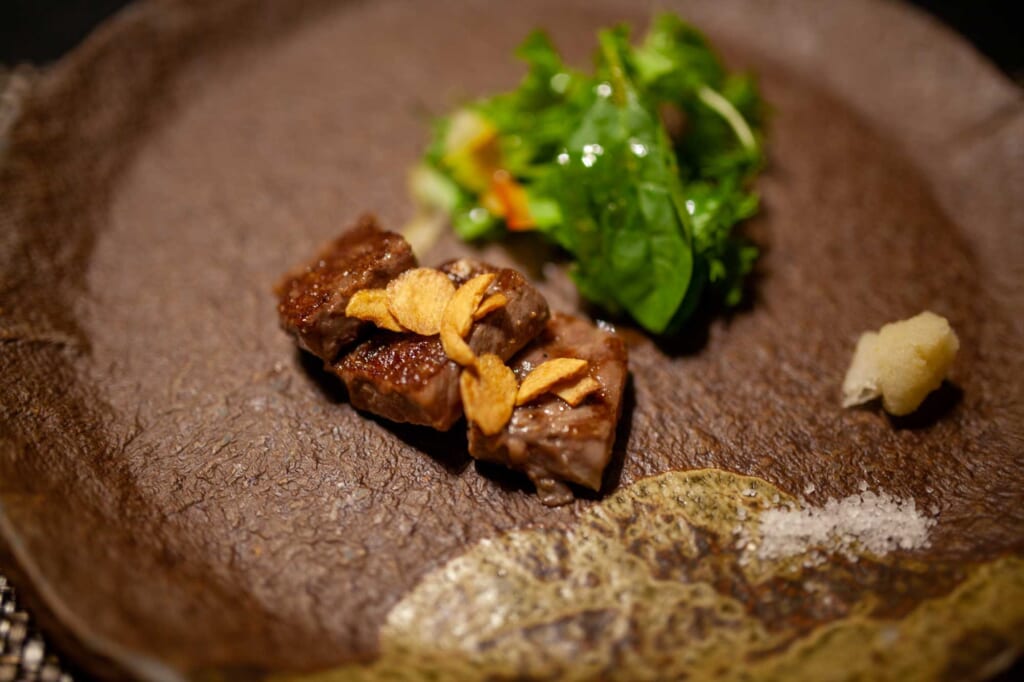
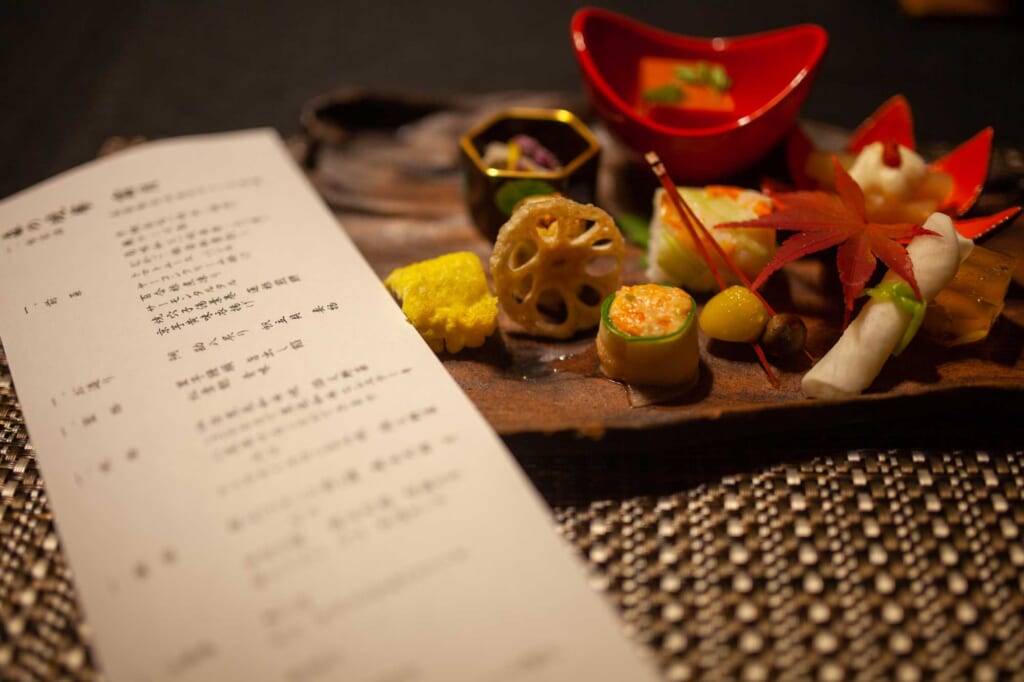
Leaving your room and getting to your private dining room is a pleasant journey in this elegant ryokan, one of the oldest establishments in the 600-year-old onsen town of Kamasaki. The dimly lit and narrow corridors lined with Japanese-style shoji sliding doors feel like a labyrinth. At the end is a reward that is one of the most exquisite dining experiences I have had in Japan. The table, which was set so beautifully and exquisitely, made me pose for a moment before indulging myself in the kaiseki course, including western and Japanese culinary elements rightfully earning its chef 3 stars + in Michelin’s Miyagi Guide.
Fukushima: Colorful Experiences, Welcoming Locals
Our last stop on our trip was Fukushima, the closest prefecture to Tokyo that is easily accessible with a 1.5-hour Shinkansen ride from Tokyo. Fukushima stands out with its temples, history, and nature shaped by volcanic activity, but most importantly, the prefecture’s welcoming locals.
Experience Zen Meditation in Ryusenji Temple
Our visit to Fukushima starts with a one-to-one za-zen experience with the head priest of one of the oldest temples of Fukushima — Ryusenji Temple, established in 1460 in Nihonmatsu city (二本松市).
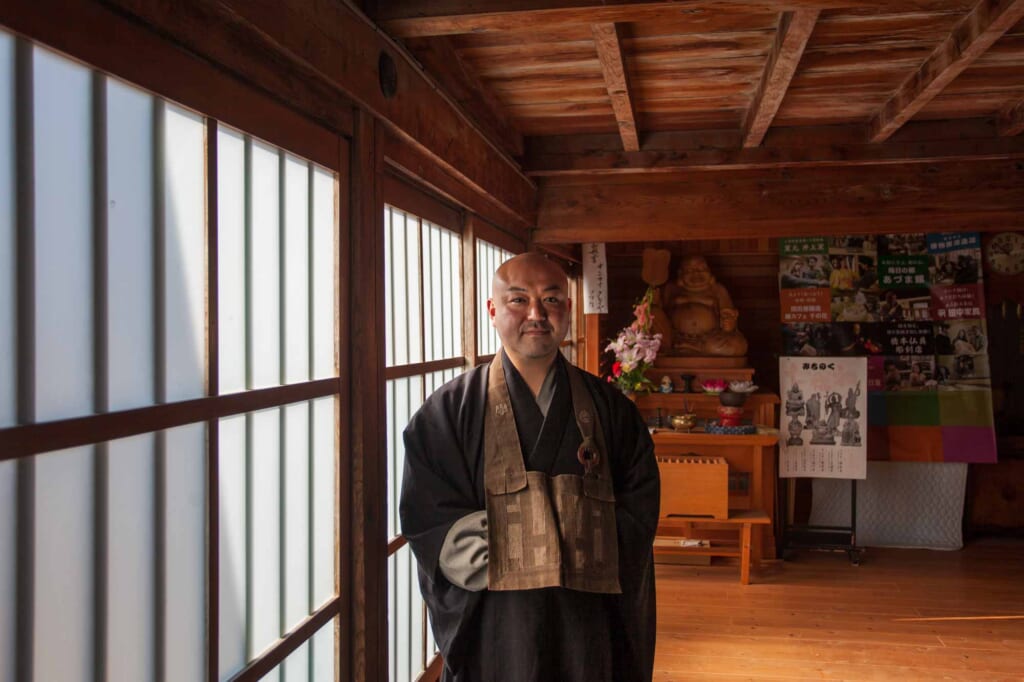
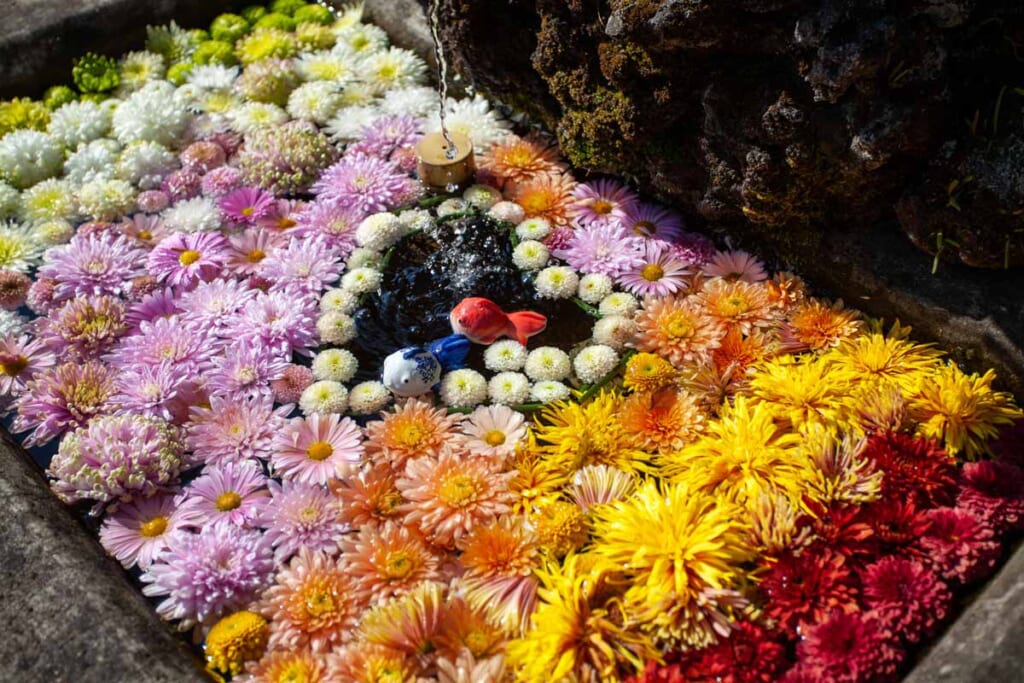
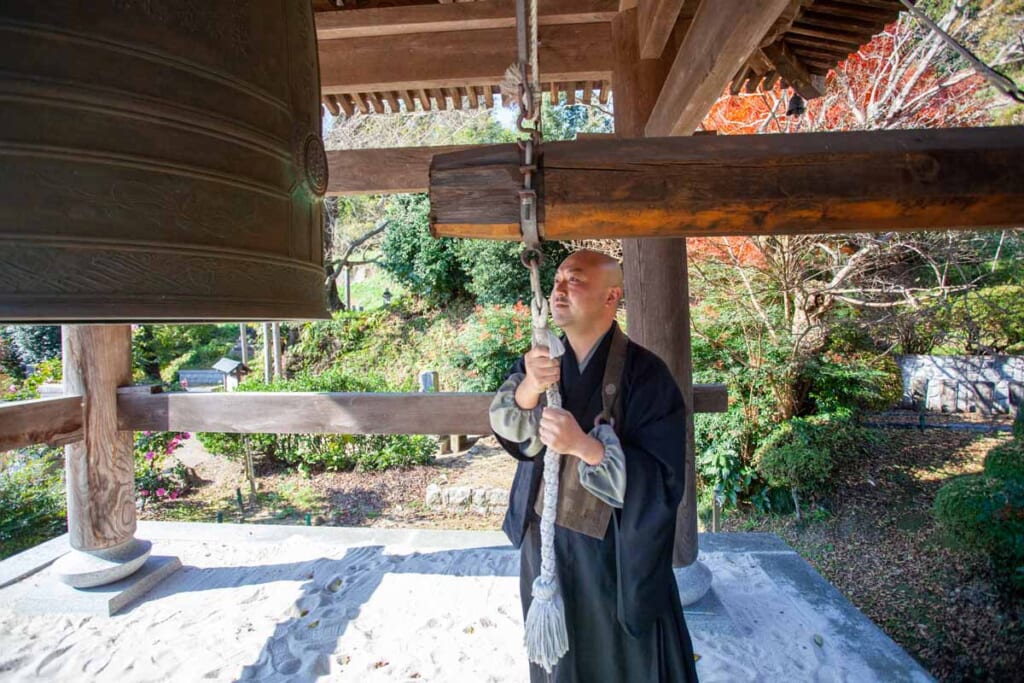
The temples belong to the Soto school of Buddhism and are led by the priest born into the temple family. The young priest gently eased us into the za-zen process while explaining that feeling comfortable enough to let go of the mind is more important than adhering to the proper techniques. Despite my limited experience with za-zen meditation and being a rather anxious person, even I managed to let go barely a few minutes into the session until I heard the gentle gong sound announcing the end of our session.
Goshikunuma: a Picturesque Hike Followed by Italian Feast
While it requires more movement than za-zen meditation, our next experience in Fukushima took us for another relaxing experience, to Goshikinuma Ponds hike located in Bandai-Asahi National Park. The rather unchallenging hike turned out to be magnificently rewarding in terms of the scenery.

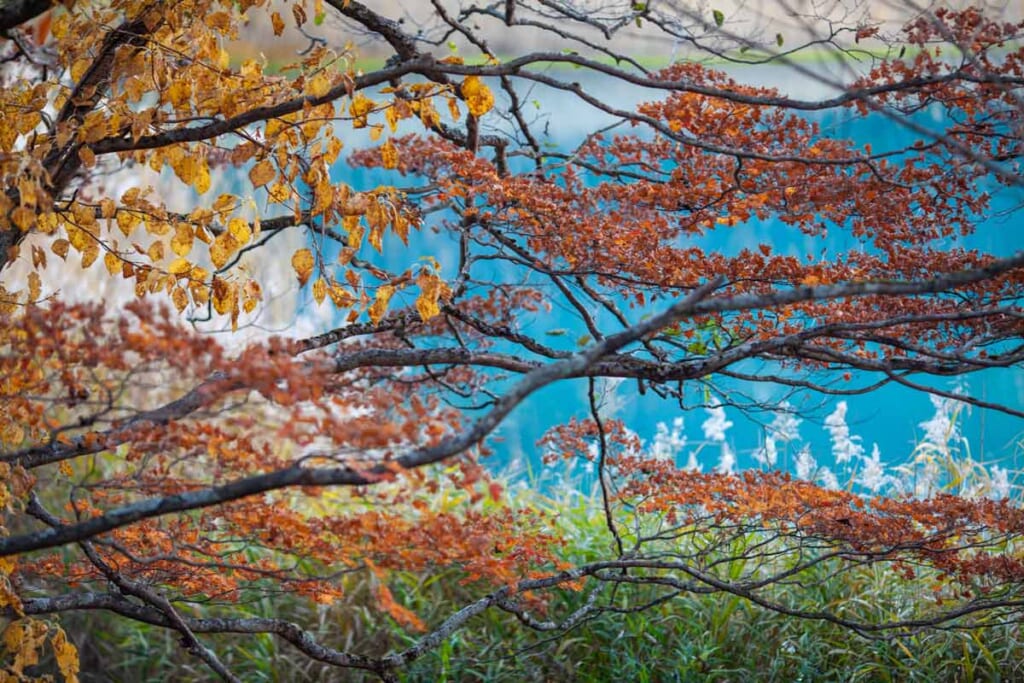
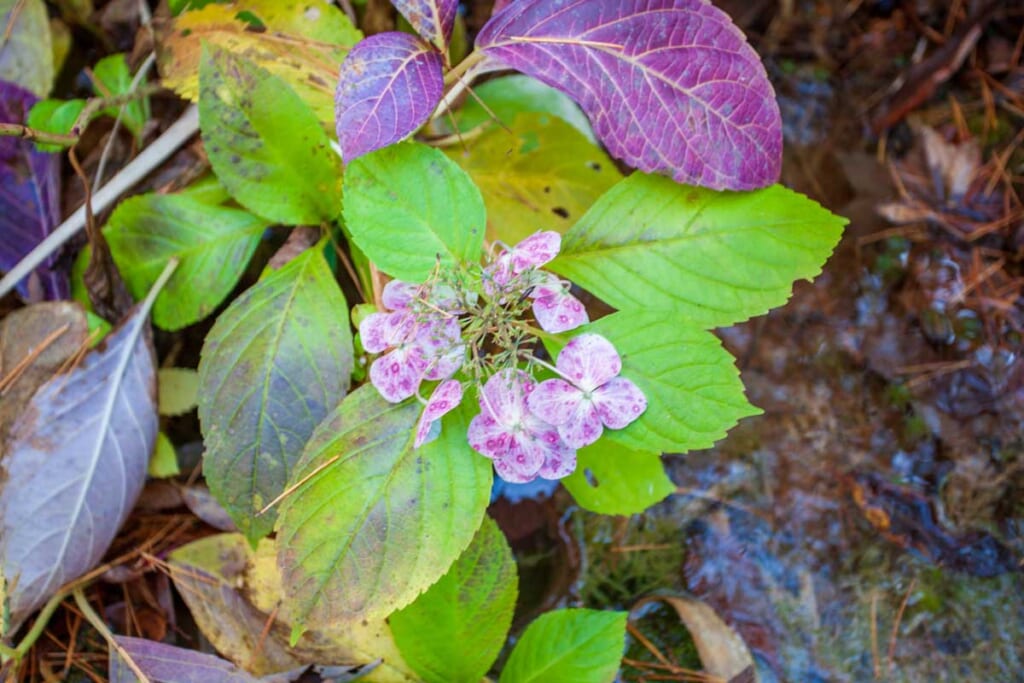
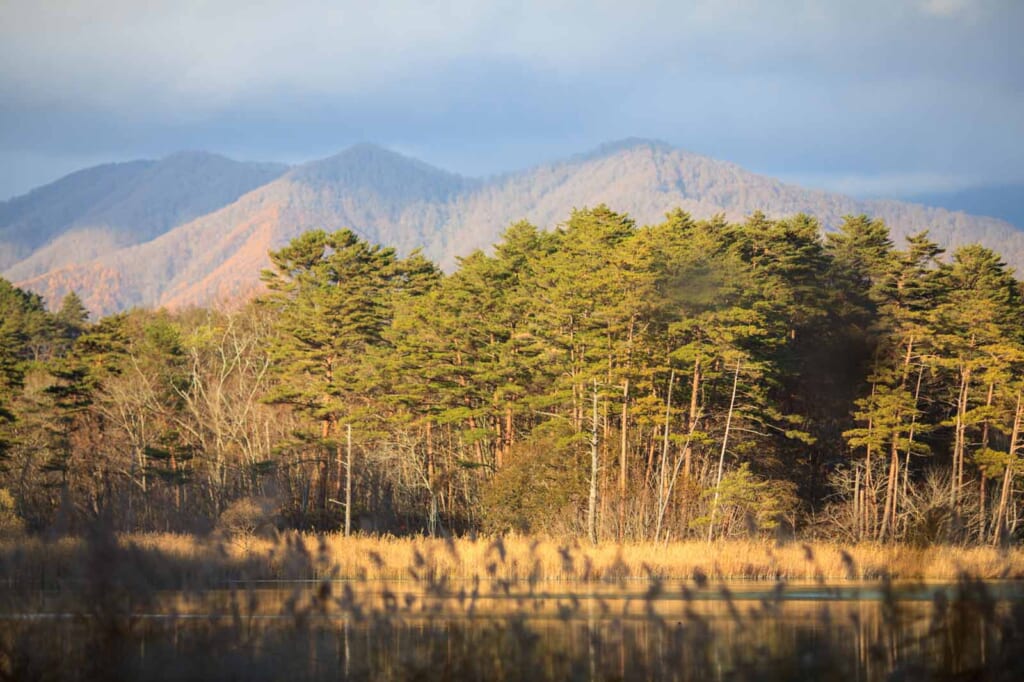
The hike took around one hour one way, with various stops along the lakes that were formed due to volcanic activity. Aonuma Pond, with its metallic turquoise color, is often referred to as the most beautiful among the many ponds located in this area. The Japanese word Goshiki-numa (五色沼) refers to five-colored ponds in Japanese, and Goshiki is a word used to describe a colorful mysterious and beautiful appearance, a perfect match for the scenery awaiting the visitors.
The joy of fresh air and the colorful scenery were complemented by a culinary reward at the end of this hike, the cozy Il Regalo Restaurant located right across the street from the entrance of Goshikinuma trailhead. The Italian restaurant offers reasonably priced set menus (1,700-2,700 JPY) that include a variety of pasta, pizza, and meat dishes and indeed carry the aura of cozy trattorias of Italy.
Also Read: Hiking in Japan: Discover the Unexplored Fukushima Prefecture
Paper-Mache Dolls and Live Dancing at Takashiba Dekoyashiki Craft Village
I could not wish for a more perfect goodbye to Fukushima and Tohoku than a visit to Takashiba Dekoyashiki craft village near Koriyama city (郡山市).
The leading craft in town is the making of paper-mâché dolls reported to have been learned by locals from a traveler from Kyoto during the Edo Period. The area was, at the time, relatively poor, where livelihoods depended on the rice harvest in the summer. Learning paper-mâché doll craft enabled locals to have an additional source of income during the colder months of winter.
We visited a shop run by a very welcoming husband and wife duo where the entertainment was not only limited to trying our hands on paper-mâché doll making but also included a lively dance performance by the shop owner wearing his hand-made mask.
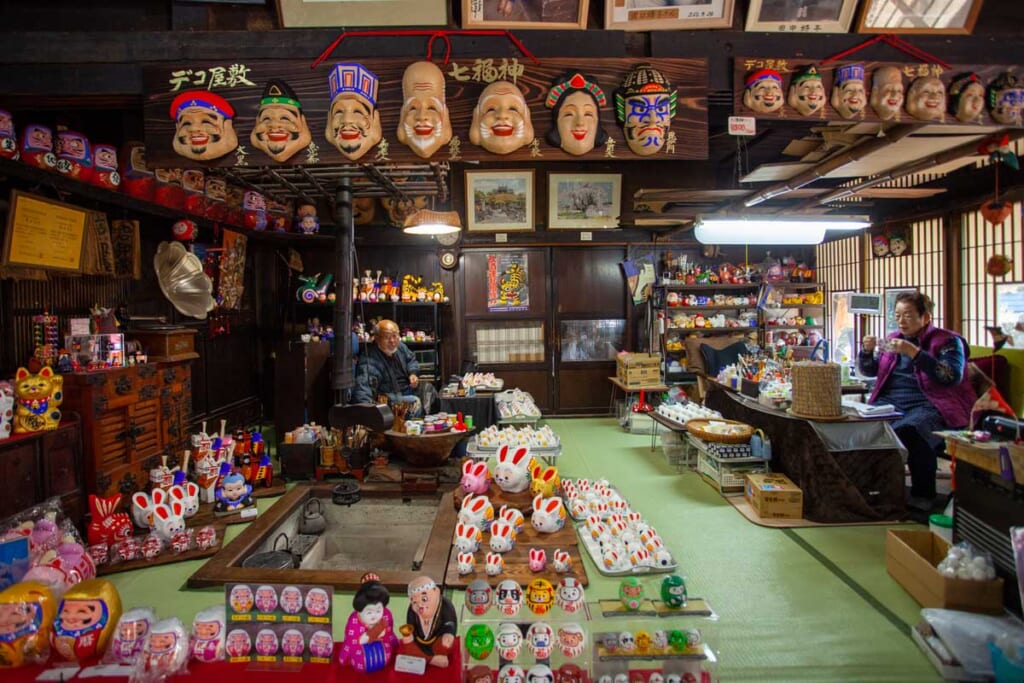
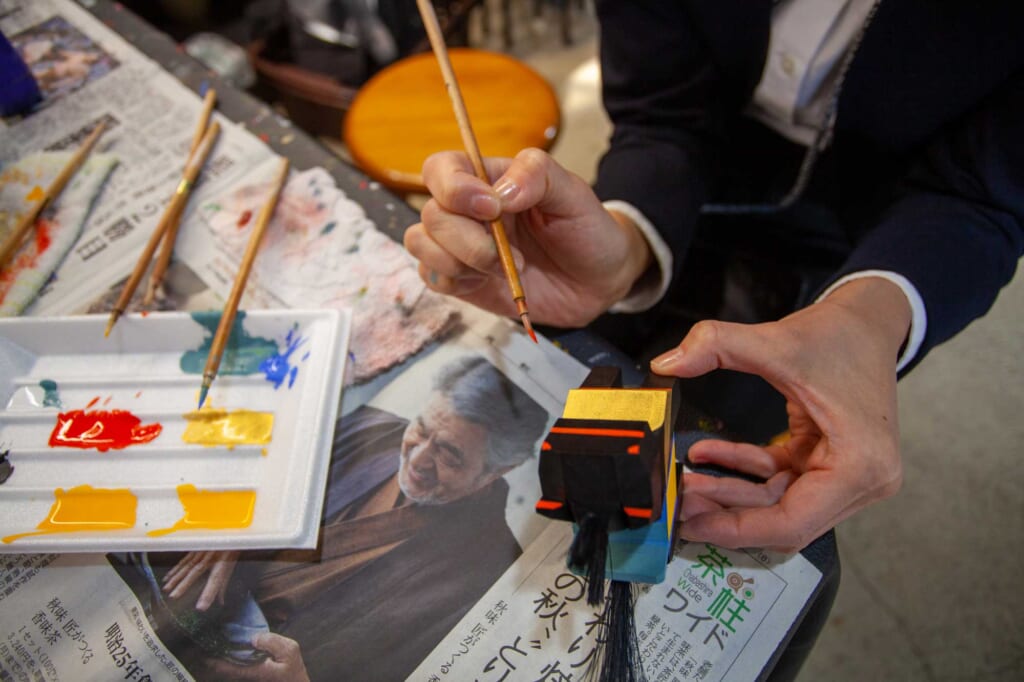
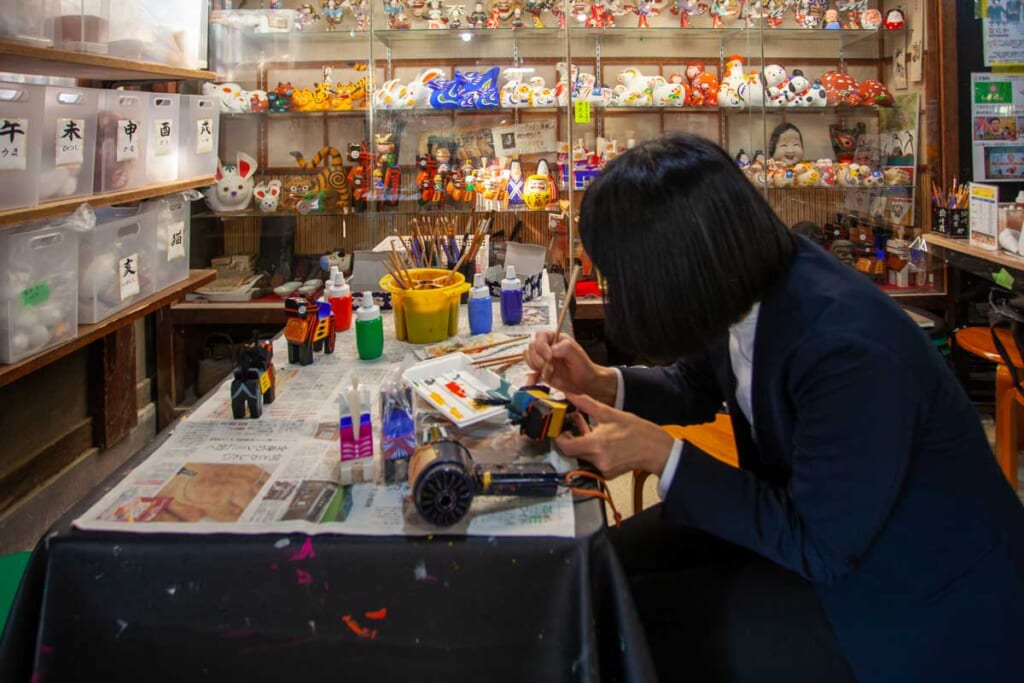
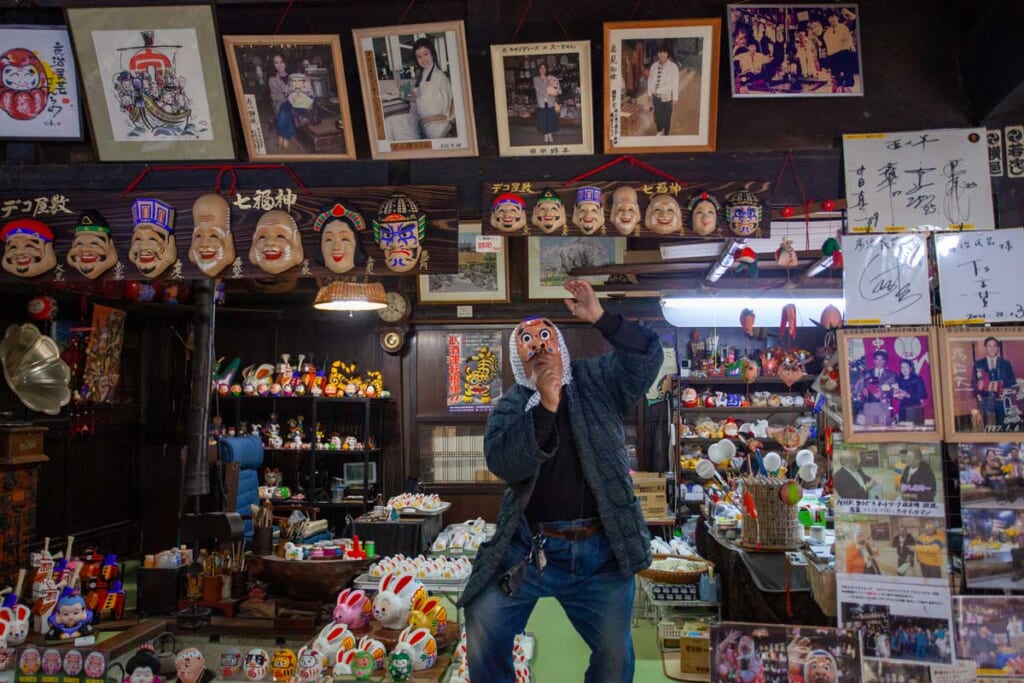
The store owner guides the visitors in every process of paper-mâché doll making, starting with choosing a pattern and colors. Thanks to the liveliness of the owners, the coziness of the shop, and the therapeutic impact of focusing on painting the paper, Takashiba Dekoyashiki visit was the perfect goodbye to beautiful Tohoku.
How to Access Tohoku
Tohoku is well served by the JR East rail network, including an expansive line of the Shinkansen bullet train that goes all the way up to Aomori from Tohoku. There are also JR East Rail Passes available to visitors who want to focus their travels on the Tohoku area and who may not need the nationwide coverage offered by the JR Rail Pass. For the smaller cities and towns listed in this article, renting a car would be the more ideal option, although public transportation is also available in certain cases.
Tohoku is a place of many wonders. So far, my five trips to the region have only allowed me to scratch the surface, and I cannot wait for my next trip to explore more. Tohoku offers the best of the two worlds — the traditional side of Japan welcoming visitors to their exquisite accommodations, hot springs, and cultural excursions, and the modern experiences designed by the young locals who continue to carry Tohoku’s centuries-old practices, crafts, and culinary heritages into the future.
Sponsored by: Tohoku Tourism Promotion Organization
Featured image by: Yamagata Prefecture


